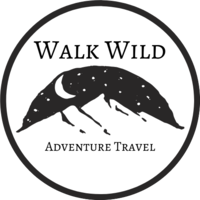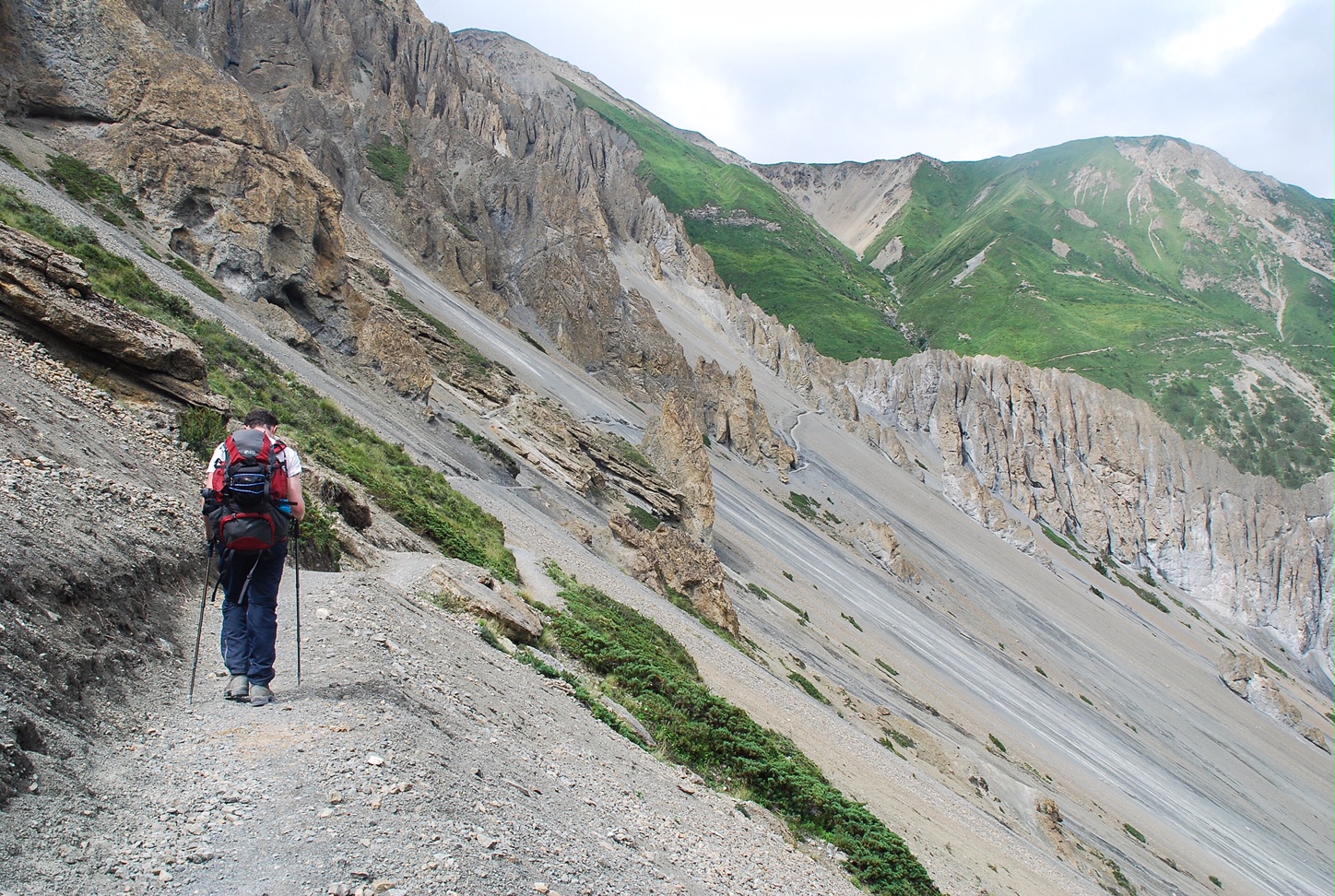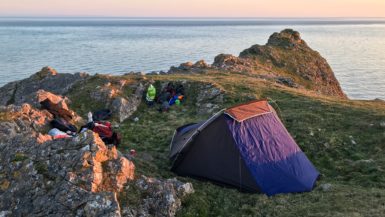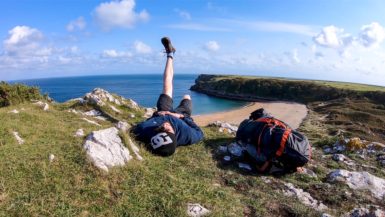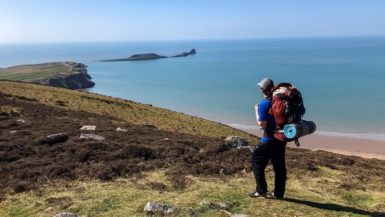An In-Depth Travel Guide for the Annapurna Circuit Trek in Nepal
25 Minute Read
The Annapurna Circuit is a high-altitude trek in the Nepalese Himalayas. With its varying trailheads and a wide range of side-treks, the Annapurna Circuit is anywhere between 100-145 miles long and can take 14 – 22 days to complete.
The trek is considered to be one of the best long-distance hikes in the world due to the range of environments you pass through, the comfort on offer in the Himalayan tea houses, and the outstanding beauty on display.
The trek circles around the Annapurna Massif, which boasts 1 peak over 8,000 metres, 13 peaks over 7,000 metres, and 16 over 6,000 metres in a region known as “The Roof of the World”.
The highest point of the trek is at the Thorong La pass, a mountain crossing that is at 5,416 metres of elevation. Most hikers walk the route anti-clockwise as that allows for a more steady increase in altitude making for a more manageable trek.
This travel guide will tell you everything you need to know for how to hike the Annapurna Circuit trek yourself.
- Where to Start?
- How to Get There?
- What Season to Hike?
- How to Find Your Way Around?
- Where to Stay?
- What to See?
- Food & Drink
- What to Pack?
- Is it Safe?
- Bonus Tips
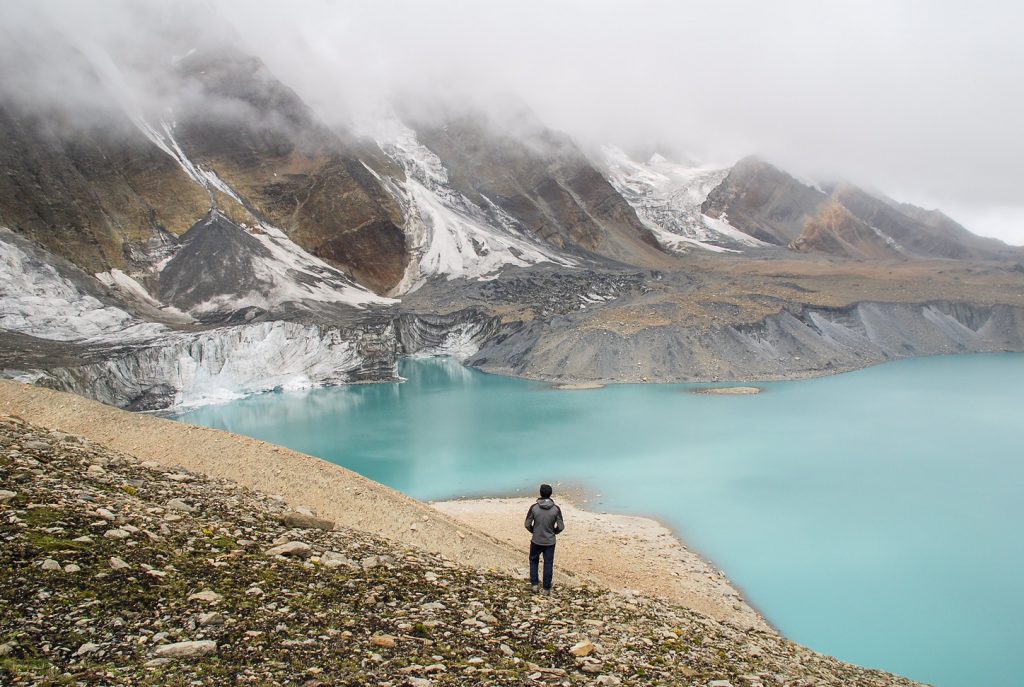

This page contains affiliate links. This means I make a commission if you buy a product I have recommended (at no extra cost to you). All recommendations I give are genuine and my own. Thanks for the support!
See also:
10 Tips for Beginner Hikers
10 Hiking Safety Tips
1. Where to Start?
The Annapurna Circuit is in the Annapurna Conservation Area on the northern edge of Nepal. It rivals the Everest Base Camp for the most popular hike in the country with some claiming it is even better due to its wide range of landscapes.
The official starting point of the trek is at Besisahar and the finish-line is at Nayapaul. The trail is shaped like a horseshoe around the Annapurna Massif in the centre. The Himalayan mountains are all around you and the trek gives you the chance to get up close to the peaks.
The trail used to be all walking paths. However, in recent years, dirt roads have been built in the lower regions of the trek. This means that some people choose to take a 4×4 further up the path to start at one of the villages north of Besisahar instead.
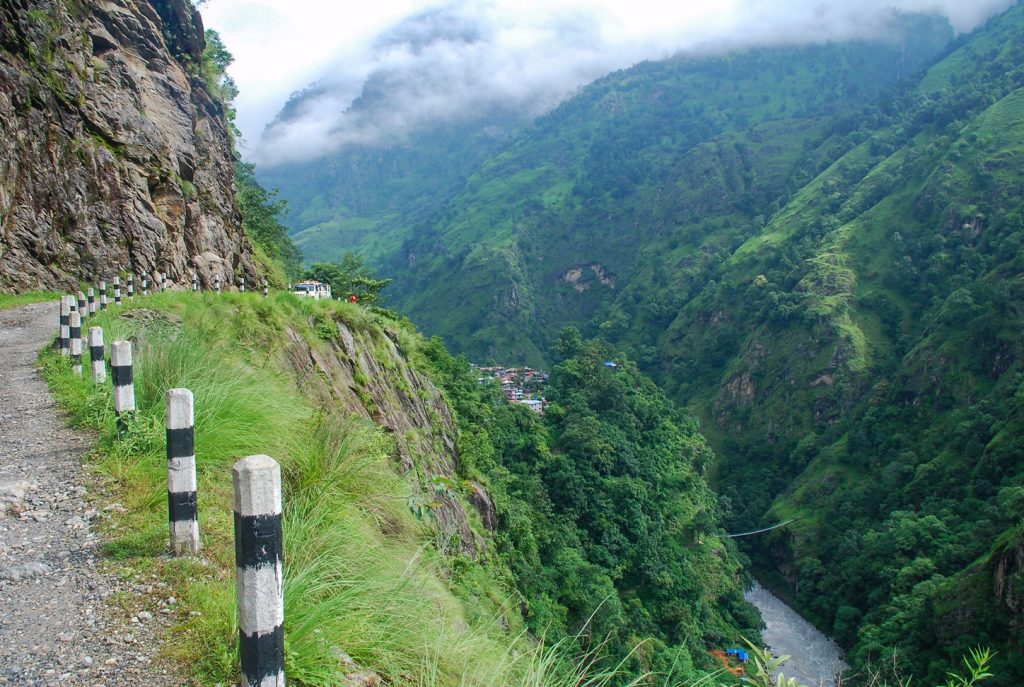

The Nepalese government built a road from Besisahar up to Manang then another road between Jomsom and Nayapaul. The roads are both a good feature, for ease of access, and an area of substantial controversy due to the disruption caused.
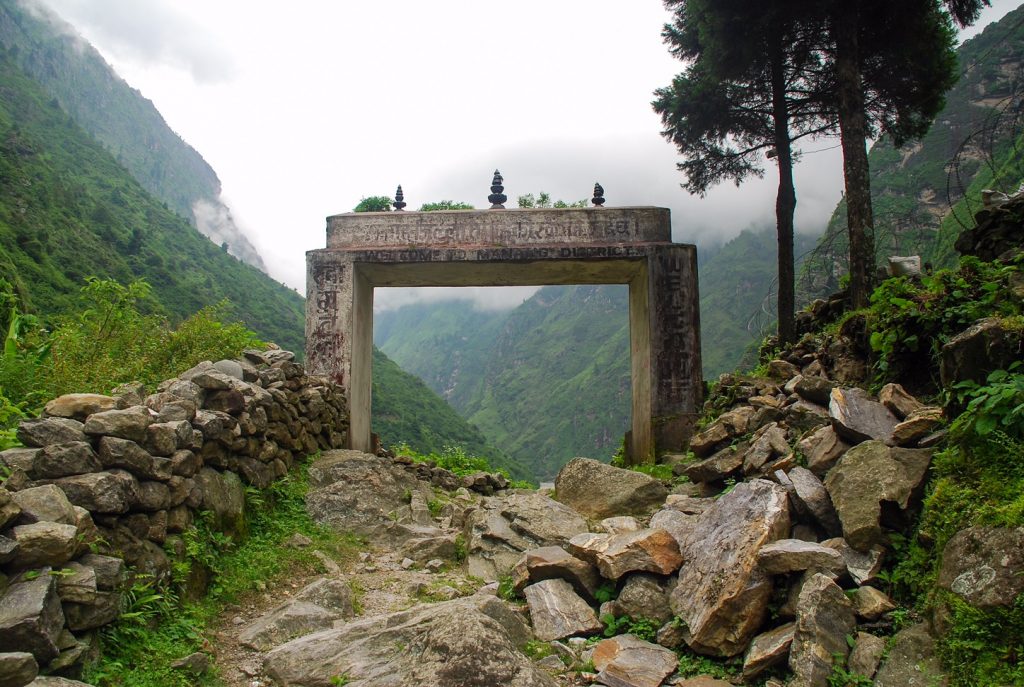

Most of the trail can be walked away from the road but in these lower sections, up to 40 miles is walked along the road. The scenery is still lovely and it’s not like a busy highway, but you may get the occasional truck or 4×4 going by.
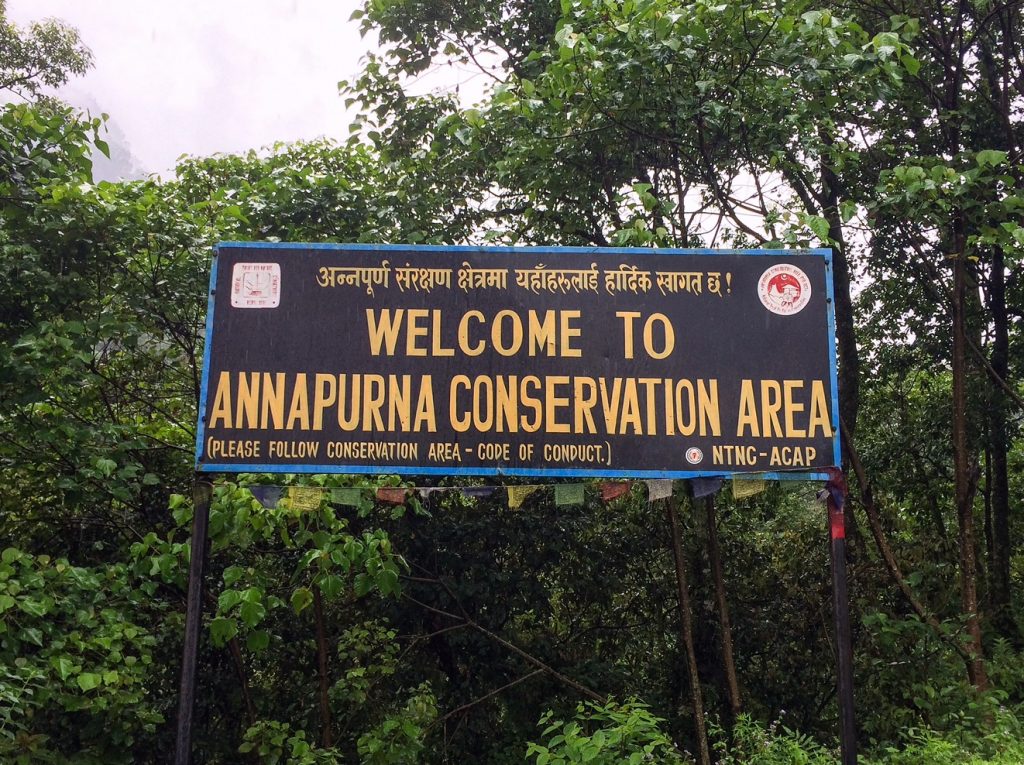

There is also the possibility of finishing the trail in different locations. After passing over the Thorong La pass, there is an airport in Jomsom where some hikers choose to fly back from. Other hikers choose to walk to Tatopani or Ghorepani before catching a 4×4 down the rest of the trail.
There is also the possibility to add on a few days and trek to Annapurna Base Camp, also called the Annapurna Sanctuary, although this would extend your trip substantially and is only advisable for experienced hikers.
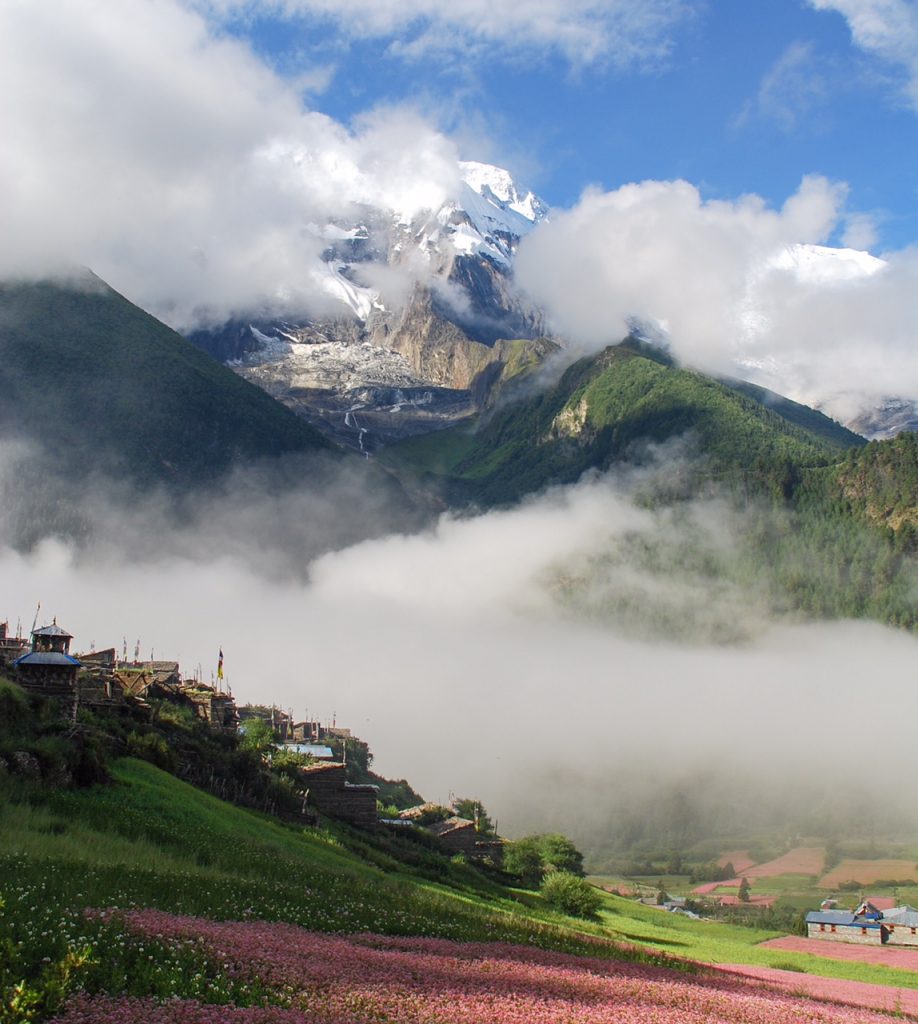

Clearly, there are a range of options for where to start and finish the hike. To complete the full Annapurna Circuit, it’s worth challenging yourself to do as much of the trek as possible. It’s certainly not easy but will be an immensely rewarding experience.
Walking with Guides, in a Group, or Solo
Next, you need to consider how you wish to do this hike. Do you want to walk it alone? Are you interested in joining a tour group? Do you need a sherpa guide? Do you need someone to carry your bags?
Just for reference, I walked it alone without a sherpa, guide, or anyone carrying my bags. It’s perfectly possible, it just takes more planning and it’s a greater challenge. It all depends on what you wish to get out of your hike and how comfortable you are going at it alone.
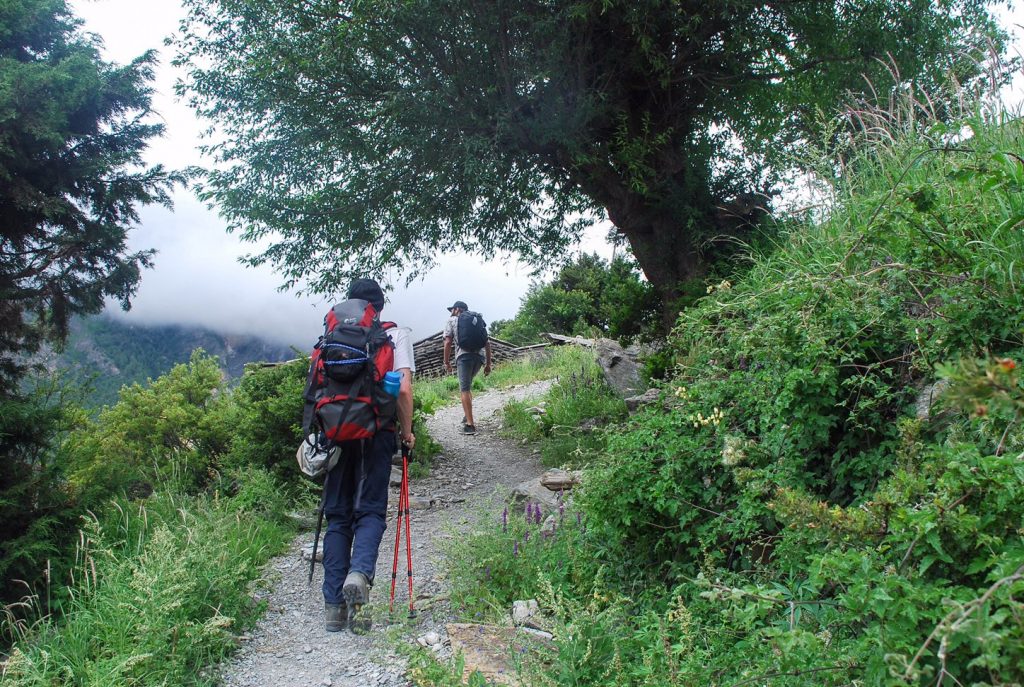

Going in a big tour group can undermine the authenticity and the money often doesn’t go to the locals. However, everything is taken care of and there’s next to no planning – kind of undermines the point of travelling in my opinion!
If you are nervous about hiking it alone, booking with a local tour agency in Nepal with a sherpa ensures the money goes to them directly. This results in a more authentic experience and the ability to learn more about the Nepalese culture. The downside is that it’s harder to organise and there are slightly more risks.
All this comes down to – what is your appetite for adventure?
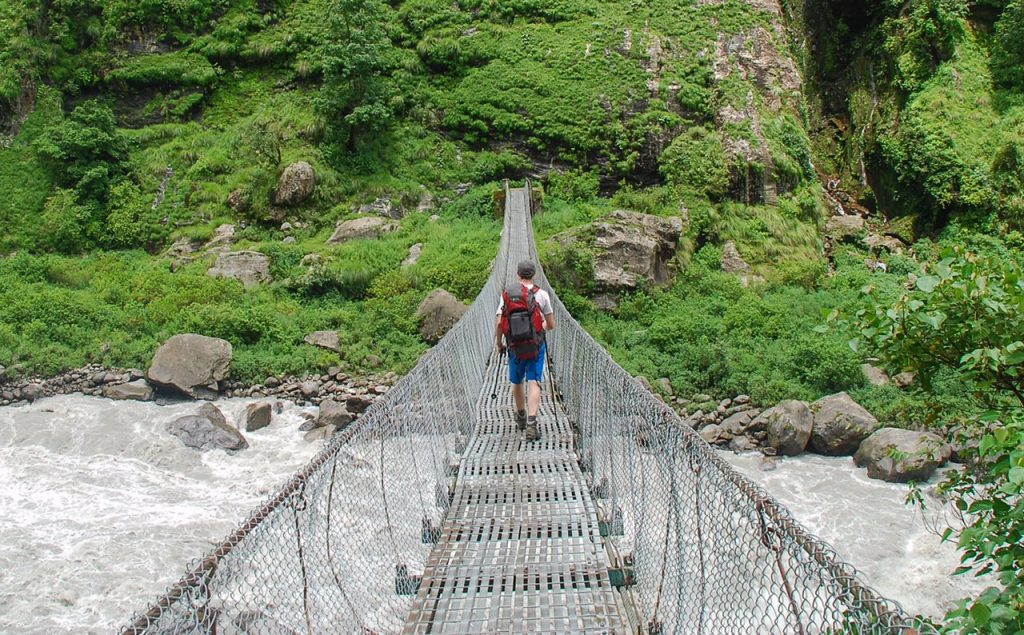

Hiking Permits on the Annapurna Circuit
You can’t embark on the Annapurna Circuit without first getting hiking permits. The permits can be acquired once you are in Nepal. The Nepal Tourism Board in Pokhara has a permit office for you to register your details. It is 5 minute walk SW of the bus station and in a cluster of buildings that includes an ACAP office, tourist board, and police station.
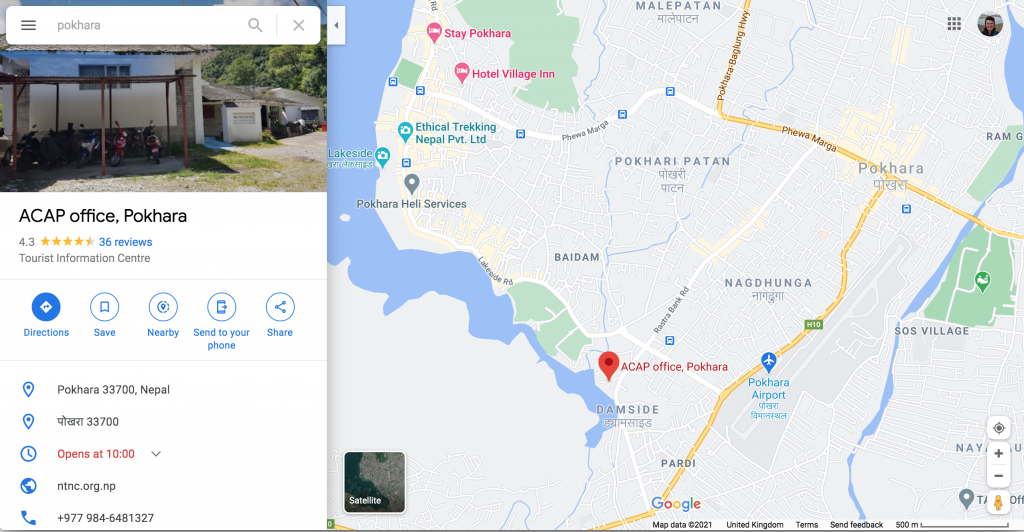

There are 2 permits you need: a TIMS card (Trekkers’ Information Management System) and an ACAP permit (Annapurna Conservation Area Project). They are essentially passes that are stamped at points along the trail to monitor your progress.
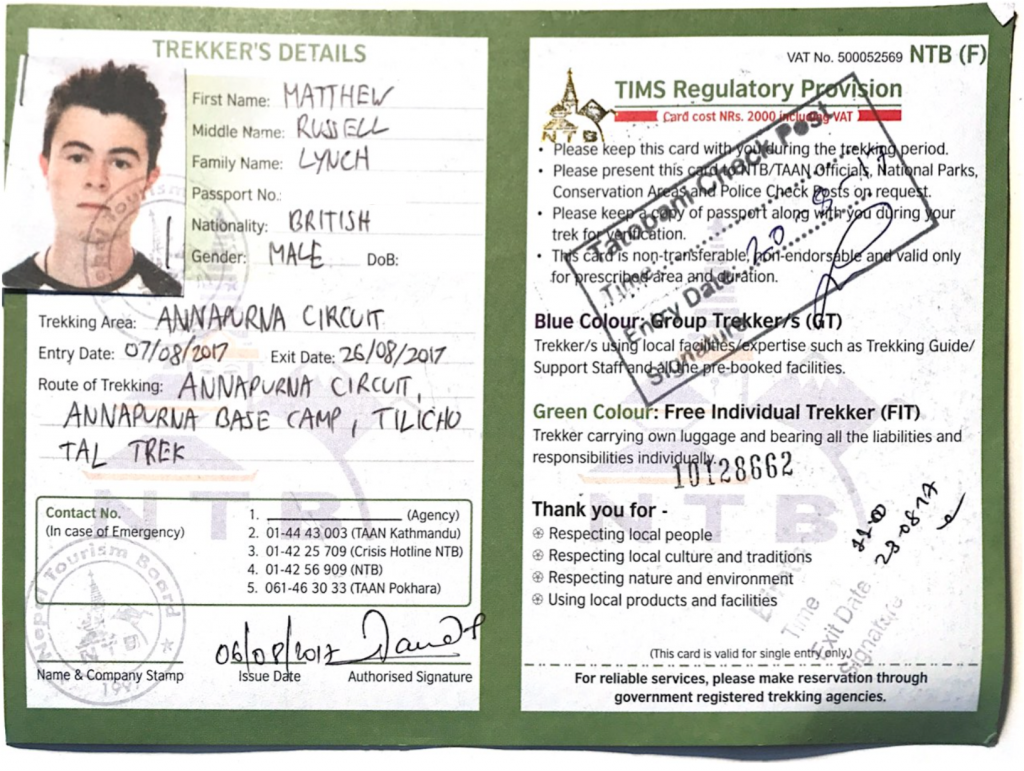

The permits are cheap to purchase and cost 2000 Nepalese Rupees each. This is around $34 USD.
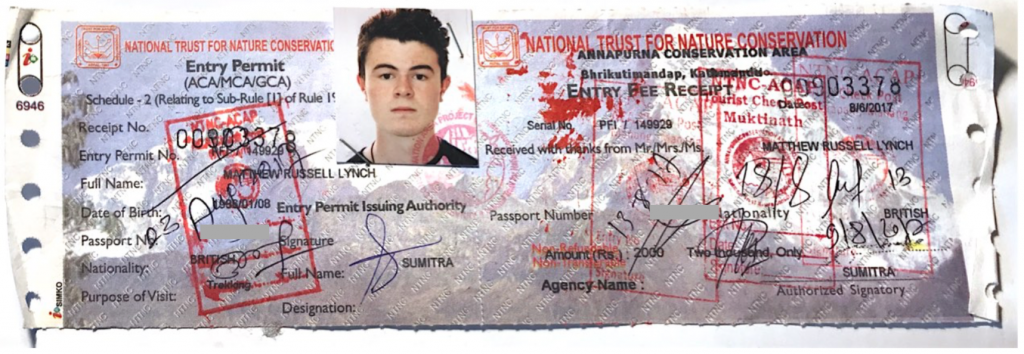

It’s very similar to applying for a visa and expect the experience to be similar to the office you got your Nepalese visa from. You need to have 4 passport photos with you; although, if you’ve forgotten them, they can be taken there and then in the permit office.
Suggested Itinerary
This in my opinion is the ultimate itinerary for the Annapurna Circuit. It includes 2 side treks to Tilcho Lake and Poon Hill. Although they’re optional, I urge you to do them as they are some of the best things you see on the trail.
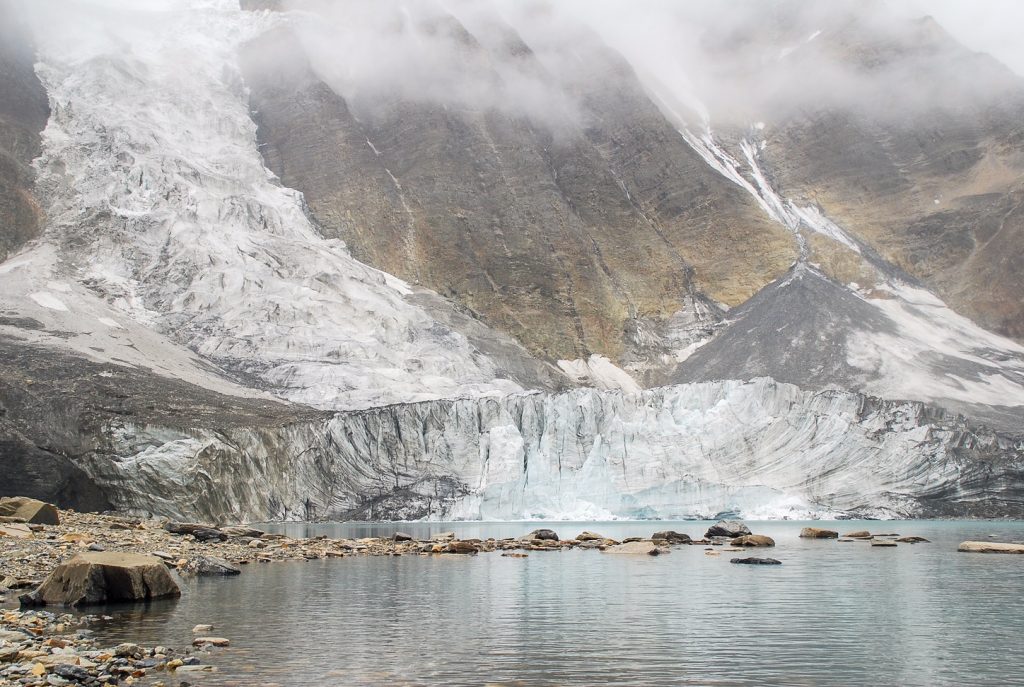

Tilicho Lake is particularly important, not just because it’s beautiful, but because it is a very useful acclimatisation hike making it easier to cross over the Thorong La Pass later in the trail. Poon Hill is less essential as it can be overly busy and you might get unlucky with the view being obscured by cloud like a did.
If you want to shorten the hike, you can start from Syange (or the town of Jagat farther north). After getting to Muktinath, the trail rejoins the road and the views aren’t quite as sensational. It’s possible to catch a 4×4 to Tatopani and pick up the trail there including Poon Hill.
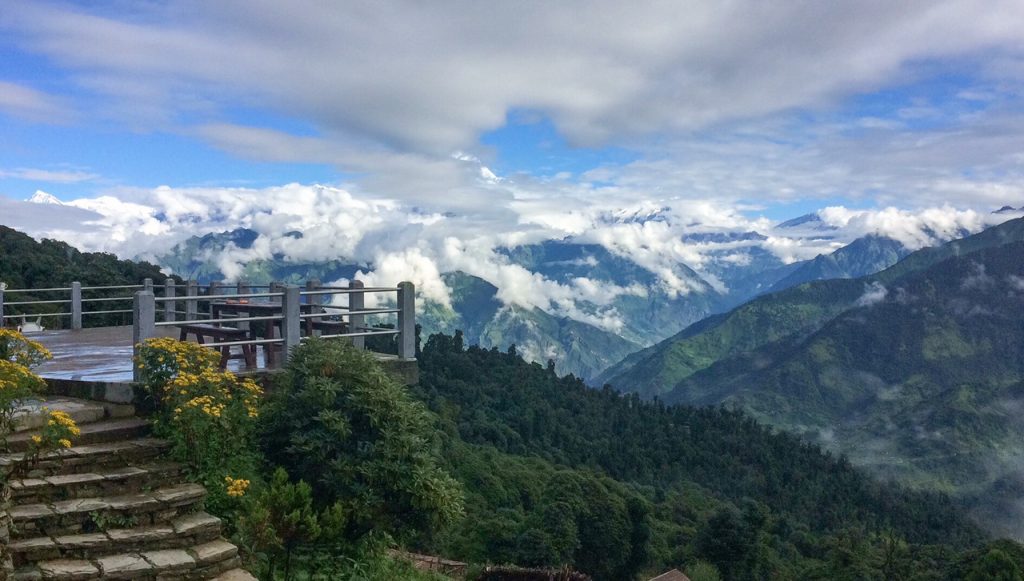

That way, you shorten the trip to around 16 days whilst still being able to see the best of the Annapurna Circuit Trek. Suggested itinerary for the full trail involves the following days:
- Pokhara to Besisahar.
- Besisahar to Bulbule.
- Bulbule to Syange.
- Syange to Dharapani.
- Dharapani to Chame.
- Chame to Upper Pisang. (Note: Pisang is split into Lower and Upper. If you climb up the mountain to Upper Pisang for the night, it takes longer but the views are sensational.)
- Upper Pisang to Manang.
- Rest Day.
- Manang to Tilicho Base Camp.
- Tilicho Base Camp to Tilicho Lake (there and back).
- Tilicho Base Camp to Yak Kharka.
- Yak Kharka to Thorung Phedi Base Camp.
- Throng Phedi Base Camp to Muktinath via Thorong La Pass (5416m).
- Muktinath to Jomson.
- Jomsom to Tukuche.
- Tukuche to Ghasa.
- Ghasa to Tatopani.
- Tatopani to Ghorepani.
- Ghorepani to Poon Hill to Nayapul – drive to Pokhara.
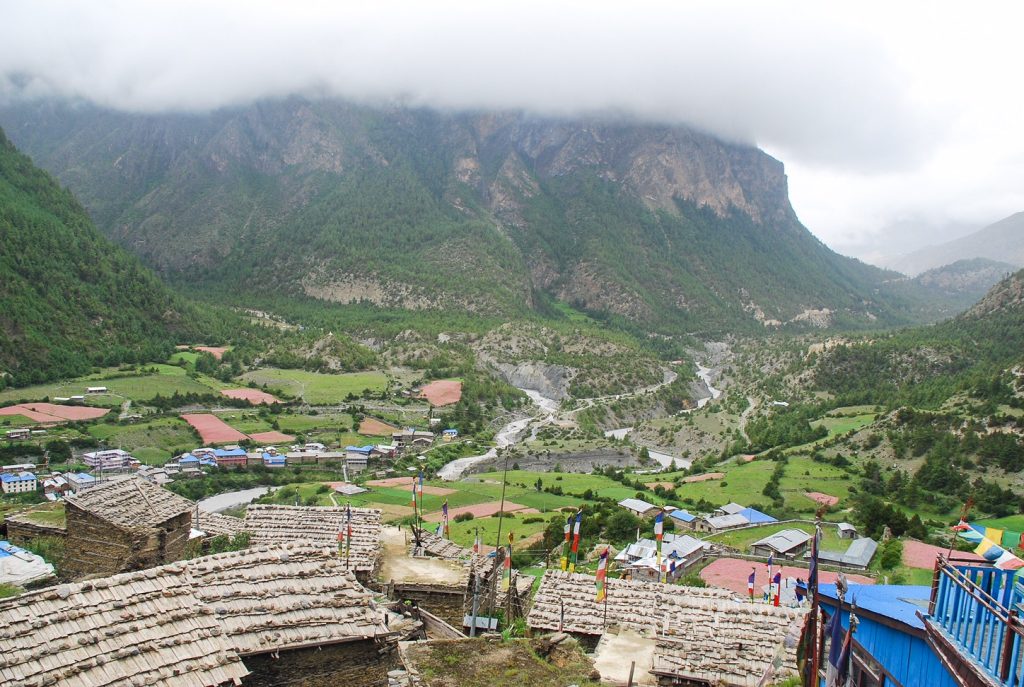

2. How to Get to the Annapurna Circuit?
Getting to Nepal is a tricky task. It’s landlocked with very few accessible roads into the country. The railway network is very undeveloped and there are not many airports.
The main transport hub is the capital city of Kathmandu where there is the Tribhuvan International Airport. Direct flights are not common. Most flights from Europe or the US stop over in Doha, Delhi, or Istanbul.
However, Kathmandu is not the closest city to the Annapurna Circuit. Pokhara is the biggest city to the south of the trek. But most itineraries start in Kathmandu as it’s easier for international travel, then go inland to Pokhara from there.
Bus or Train to Kathmandu
There are a few border crossings from India into Nepal, but these land borders take a long time to get through and the roads in Nepal are spectacularly bad. Some travellers opt to travel overland from Varanasi in India.
I travelled from Rishikesh, through the Himalayas, into Nepal via the western border. This was a terrible journey and one I wouldn’t recommend. I used local busses and due to landslides, collapsed roads, and broken busses, it took me 3 days to get from Rishikesh to Pokhara.
If possible, fly to Kathmandu, then travel to Pokhara from there.
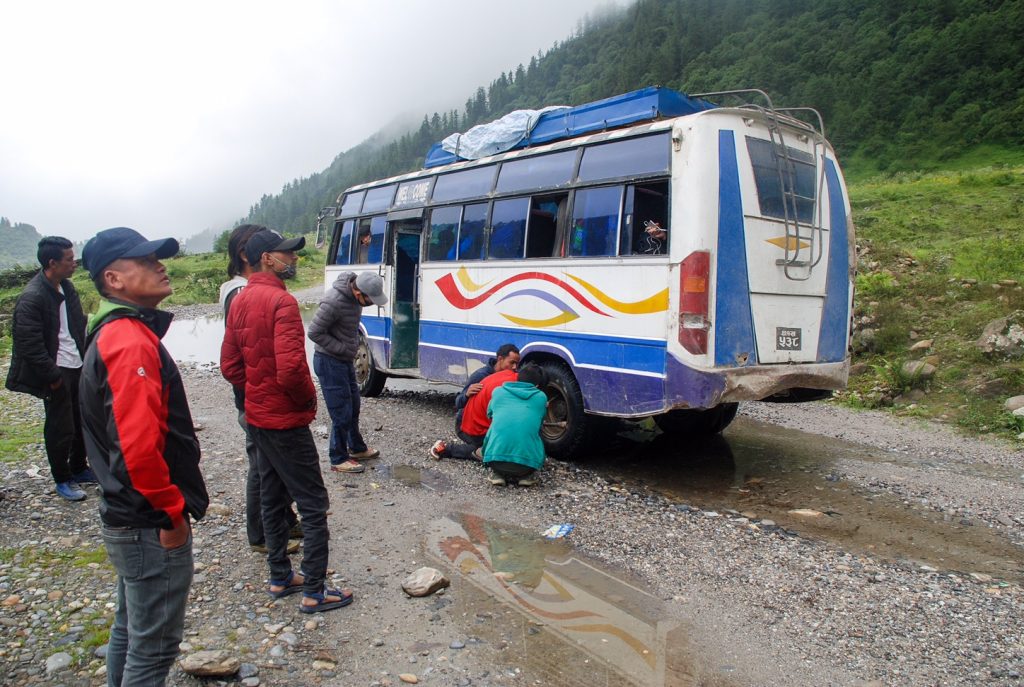

Getting to Pokhara
To get to Pokhara requires a long and bumpy bus journey from Kathmandu in either a tour bus, 4×4, or chicken bus – depending on how much you want to spend and how much you value your comfort.
The journey takes around 7 hours but this varies a great deal. Assume it will take you the best part of the day to get to Pokhara. The roads are paved in each city but in between, it turns into a heavily rutted dirt road. All part of the adventure!
Once in Pokhara, you need to catch a bus to the start of the trail. The tourist bus park is where all the busses coming to/from Kathmandu and heading up to the Annapurna Circuit depart from. Alternatively, you can book a private 4×4 to take you to the trail from your hotel or guesthouse and drop you wherever you want to go near the start of the trail.
After you’ve walked the trail, you need to get to Nayapul to catch a bus back to Pokhara. It’s possible to walk all the way to Nayapul, as mentioned above, or catch a 4×4 to take you down if you’re worn out. This is the end-point of the Annapurna Circuit where the trail reaches the main road (Baglung Rajmarg).
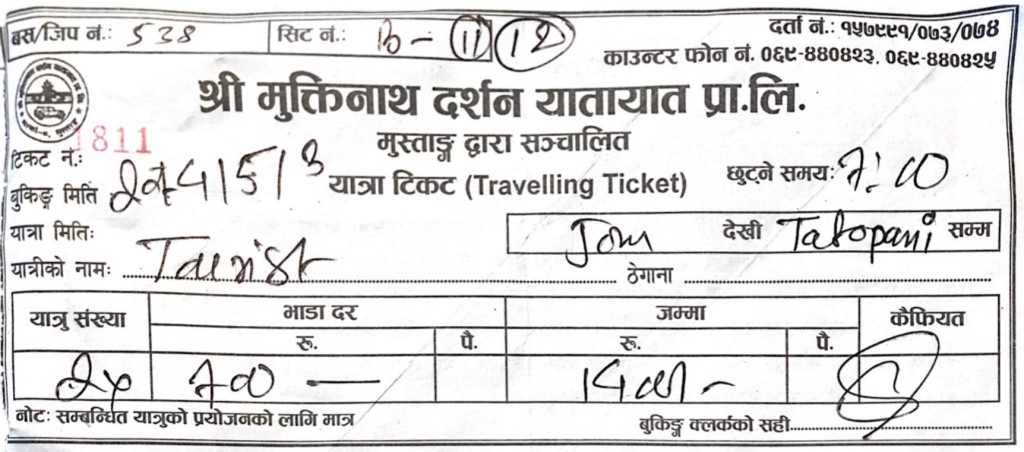

3. What Season to Hike the Annapurna Circuit?
The peak seasons for hikers are in the months of October-November and April-May. This provides the clearest conditions, best views, and the lowest chance of heavy rain or snowfall. The temperatures, although cold, are not dangerously low, as they are in winter.
April and May are particularly popular as this is when climbers flock to Nepal to summit the highest mountains, including Everest! This means the trail will be at its busiest, prices will soar, and availability for tours and accommodation will drop.
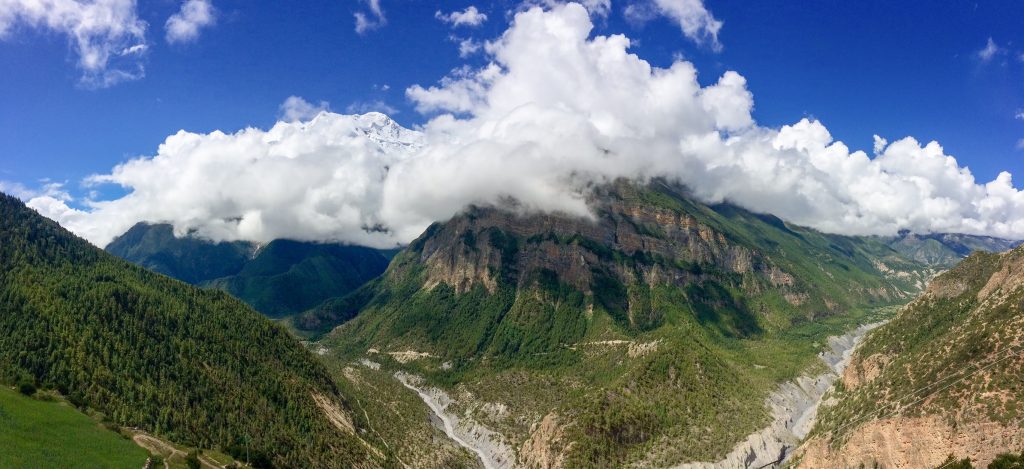

Hiking during the summer is not advised due to the monsoon. Rainclouds obscure the mountains, the views are hazy, the trails covered in water, and leeches are present at the lower reaches. I hiked at the end of August hoping to miss the monsoon but unfortunately for me, it was delayed and I caught the back end of it anyway.
Late September and the start of June may provide the best compromise between fairly good weather and a less busy trail.


4. How to Find Your Way Around the Annapurna Circuit?
If you are going with a tour group or a sherpa guide, you won’t need to worry about this. However, for everyone else, let me say, it’s perfectly possible to navigate this trail yourself!
Whether you’re walking the trail alone or in a group, I recommend you buy the Lonely Planet book on Trekking in the Himalayas. There is so much information – more than I could cover in this article – and lots of maps and diagrams.
Signposts on the Annapurna Circuit
The path is marked out by a red and white symbol which acts as way-markers for the Annapurna circuit. These markers are painted on walls, fences, rocks, trees, and signposts all throughout the trail.
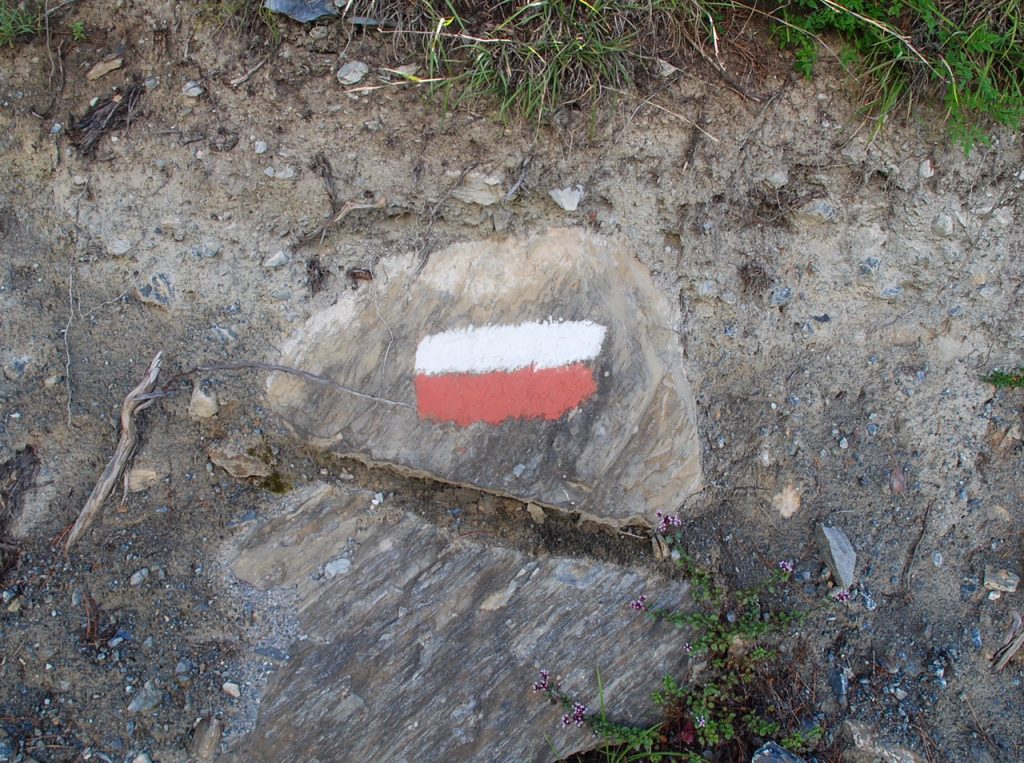

There are also lots of signposts erected throughout the trail. They provide information on the distance to the next town and point in the direction you need to walk.
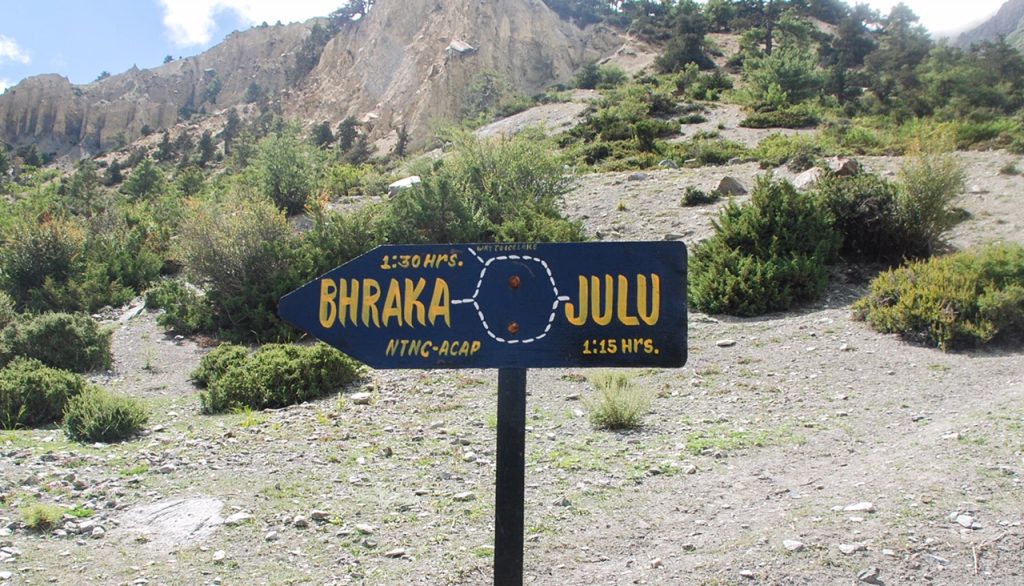

A few times a day, you pass through small settlements that contain the guesthouses known as teahouses. The owners often speak English and you can get help with directions if you’re worried you’re lost.
Maps of the Annapurna Circuit
It’s also worth carrying a trail map with you. Knowing the names of the towns and where they are on the trail can be a massive help for planning. This is so you know where to stop for lunch or where you want to stay for the night. It’s also useful to know the altitudes, distances you have to hike, and difficulty of the terrain that day.
A map is important but the trail is clearly marked and there is only really one main path you walk. It’s very hard to divert from this path and get lost as there aren’t many turning points. However, it’s better to be safe rather than sorry!
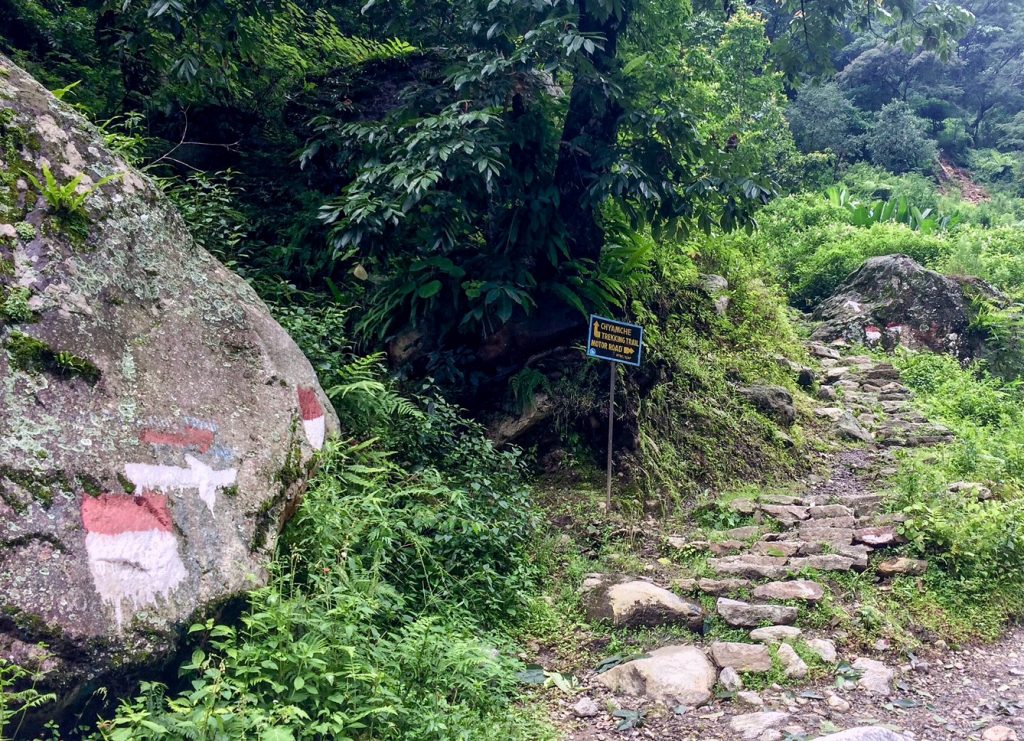

One area that is challenging is when you cross over Thorong La. Piles of rock are used to mark the direction of the trail. However, the pass is infamous for bad weather with snow and fog obscuring the path. When you get to Thorong Phedi Base Camp Lodge the night before you summit the pass, make sure you ask them about the weather and don’t rush over the top if you’re not comfortable with the conditions.
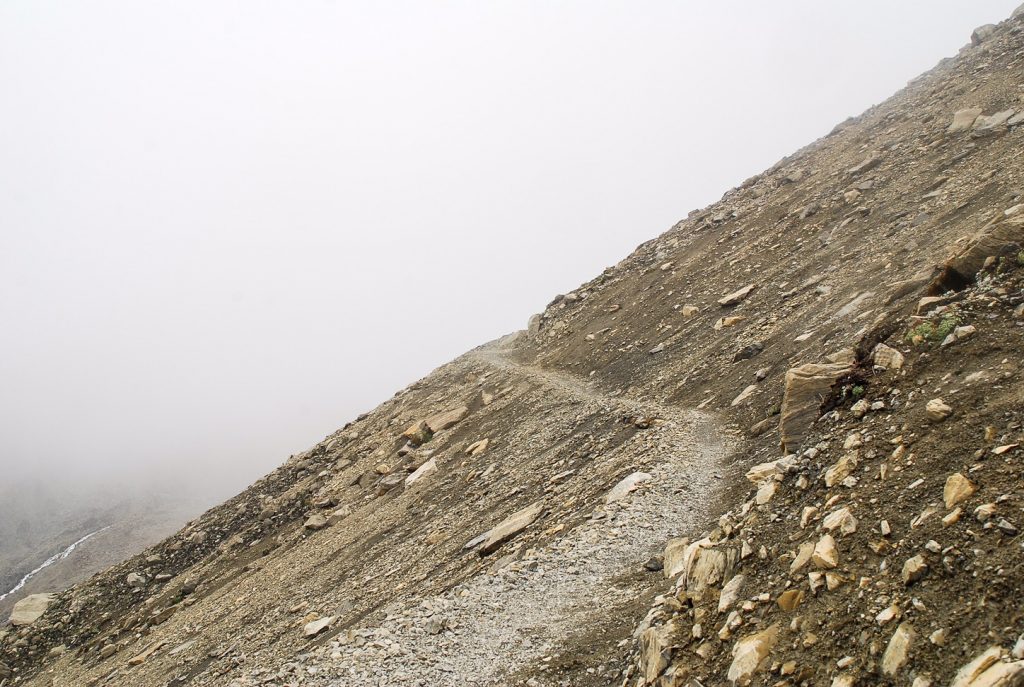

5. Where to Stay on the Annapurna Circuit?
The Annapurna Circuit isn’t called The Apple Pie Trek for no reason. One of the things that makes this such a fantastic hike is the welcoming hospitality and homely food of the Nepalese locals that run the lodges – known as tea houses – all throughout the trek.
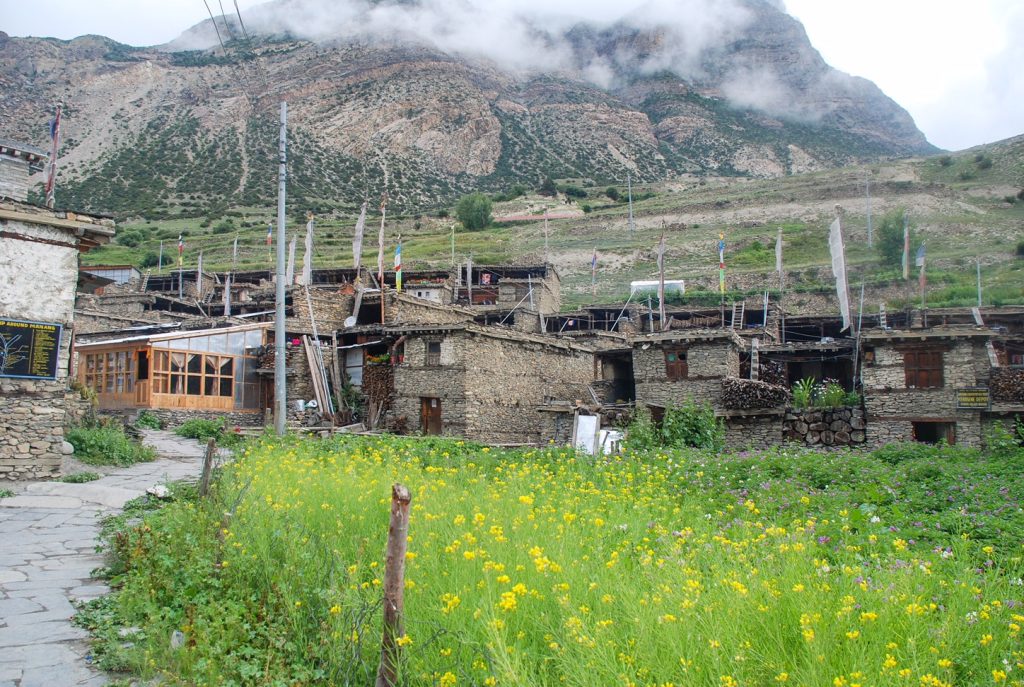

There’s no need to camp or book any kind of fancy accommodation – not that there is any even if you wanted to. You simply walk the trail each day, and when you pass through a mountain village in the afternoon/evening choose a cosy lodge to sleep in for the night.
In Kathamandu and Pokhara I stayed in guesthouses and hostels that I pre-booked on Hostelworld. The rest of the time, I stayed in tea houses.
What are Teahouses?
These tea houses vary in quality – generally becoming more sparse the higher you go as it is harder to restock supplies. But in general, the tea houses have rooms with two single beds in them. Some have larger bunkhouses where multiple people stay. But for the most part, it is these basic rooms with two beds.
There are blankets, a pillow, and a side table. Sometimes there’s a light, sometimes there’s not. You may want to bring your own blow-up pillow or sleeping bag liner for a bit more comfort and hygiene. Definitely bring a torch just in case.
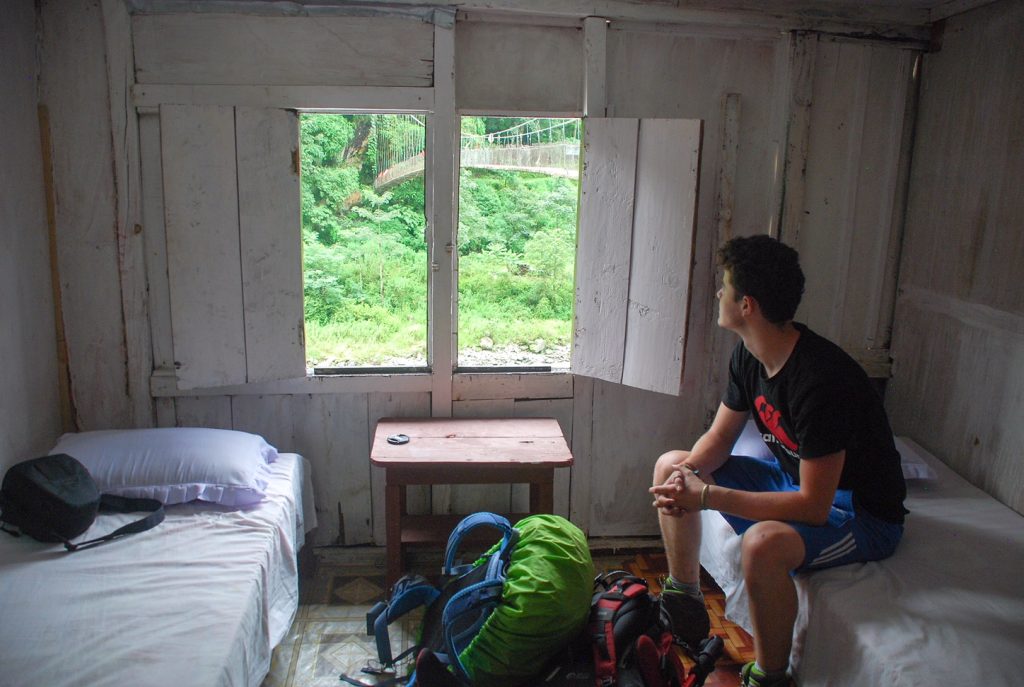

Booking your Stay
When you get to a village, there is usually a single path that passes through the centre with plenty of signs to all the tea houses offering various deals for food, accommodation, hot showers, and wifi.
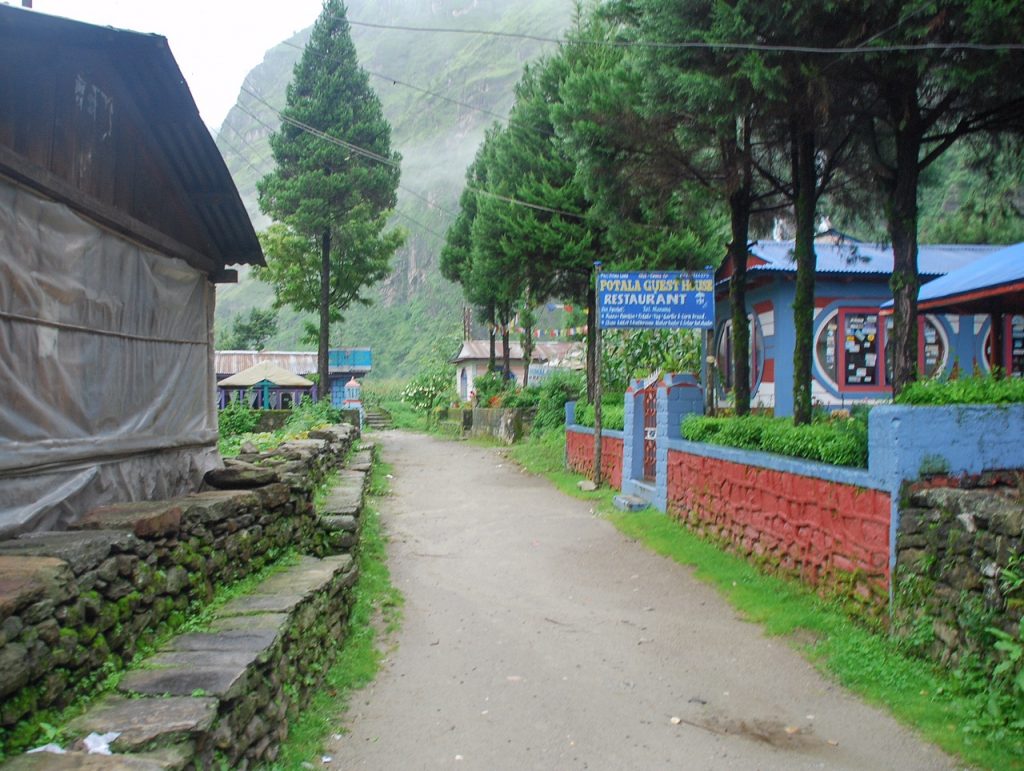

The tea houses generally have a main room with a roaring fire and tables for serving food. The food is served to you restaurant style where you order off a menu but mostly the best dish is the Dahl Bhat (lentil curry) – a Nepalese classic.
I hiked the trail during offseason, at the back end of the monsoon, and this meant there was always a space in every teahouse I came to. Most villages have multiple places to stay so it’s unlikely you’ll go wanting. If you’re worried about tea houses filling up, start asking earlier in the day rather than leaving it until it’s dark to find a place to sleep.
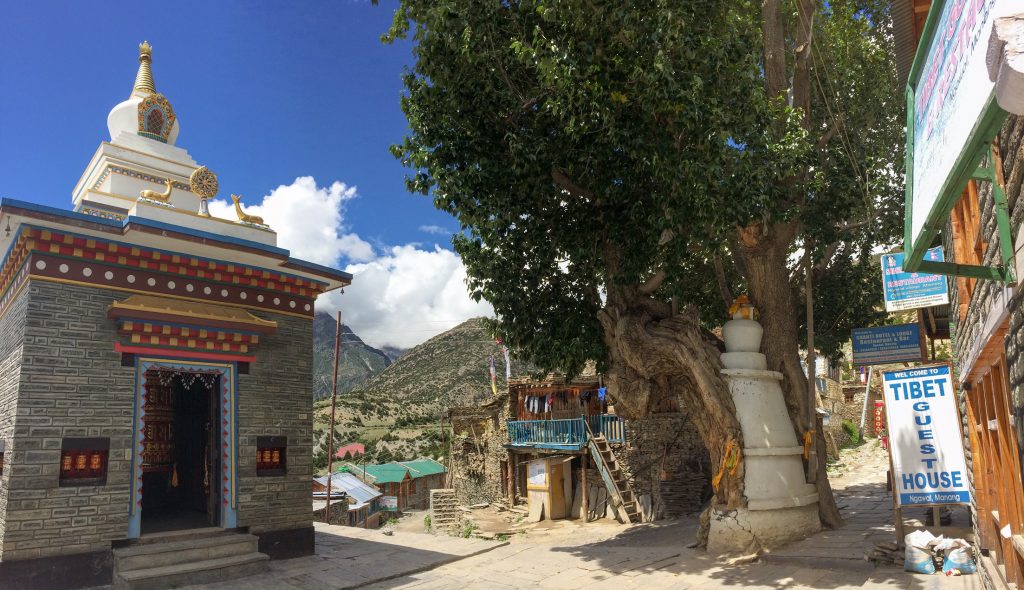

I was able to get free accommodation most nights by asking the host if I could pay for dinner and breakfast in exchange for a bed. As the bed costs next to nothing, it is the food that adds up. This only works off-season and not at every location.
Cost on the Annapurna Circuit
The prices vary from season to season but they’re never extortionate. The prices increase the higher up the trail you get. This is the same with everything on the Annapurna Circuit; as altitude increases, things get more expensive, there’s less choice, and everything is more basic.
During peak season expect to pay $20-30 USD per day. A bed will cost around 200-300 NPR ($2-3 USD) with the rest of the money being spent on buying your meals, snacks, and extra costs such as hot showers, beer, and dessert items. Breakfast, lunch, and dinner are all eaten at the tea houses.
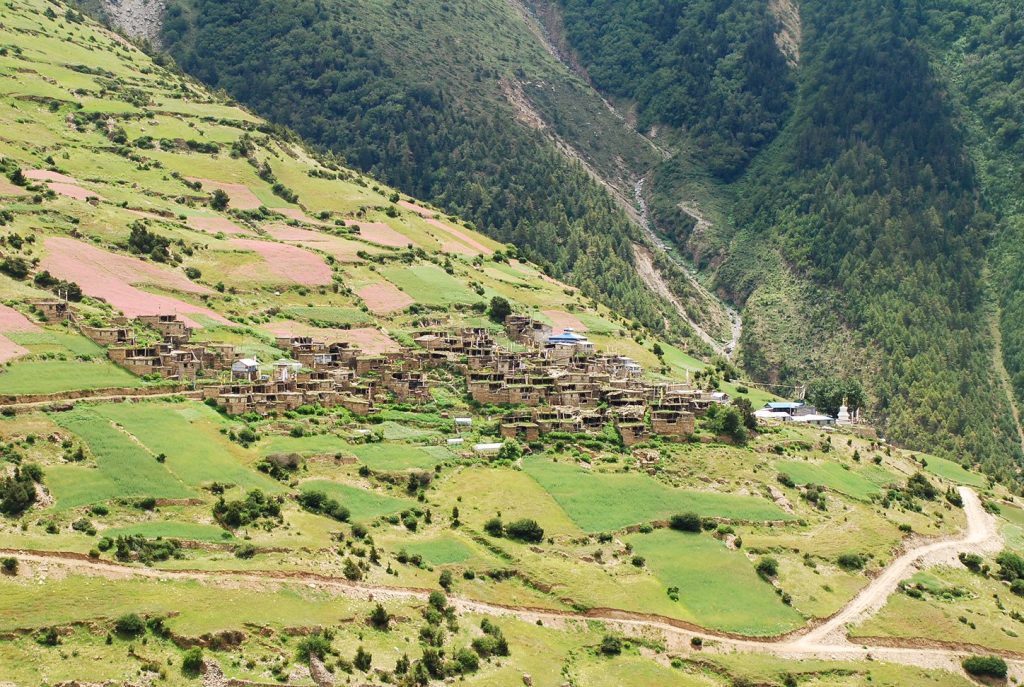

In general, you can go very basic by just booking a bed, and only eating dahl 3 meals a day. The more luxuries you add on, the greater you cost will be. It’s easy to say you’ll be frugal now, but when you get up in the mountains and you’re exhausted and hungry you won’t blink twice about buying a couple of beers and a hot apple pie for dessert. Don’t skimp on the extras as they’re one of the charms of the Annapurna Circuit Trek!
6. What to See on the Annapurna Circuit?
No words I can say will do justice to the beauty of the Himalayas. Suffice it to say that the Annapurna Circuit takes you into the heart of the tallest and most impressive mountains on this Earth.
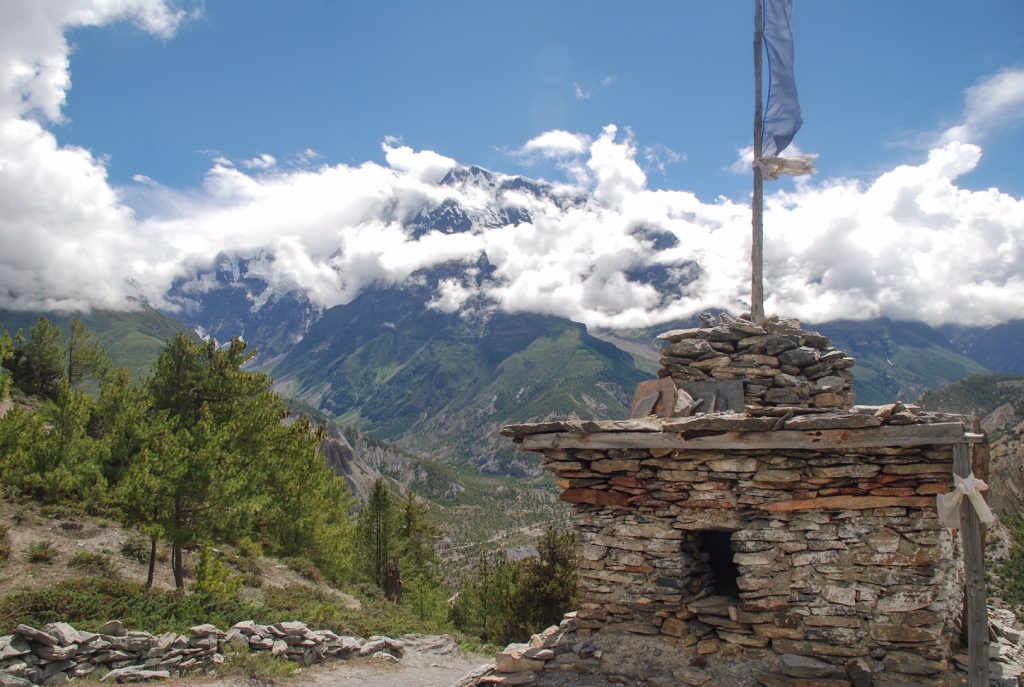

The trail begins alongside paddy fields in a sub-tropical clime. The trail gradually climbs higher, through valleys of waterfalls.
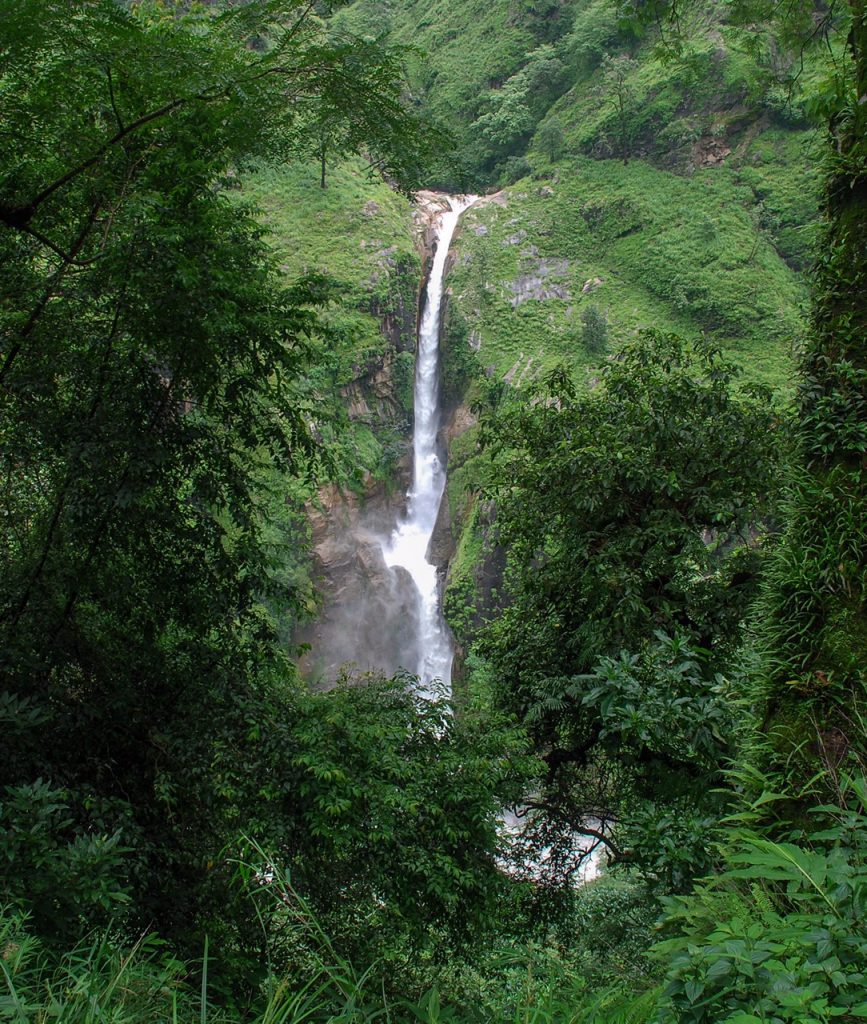

You will cross over roaring rivers on narrow metal suspension bridges that hang between the mountains.
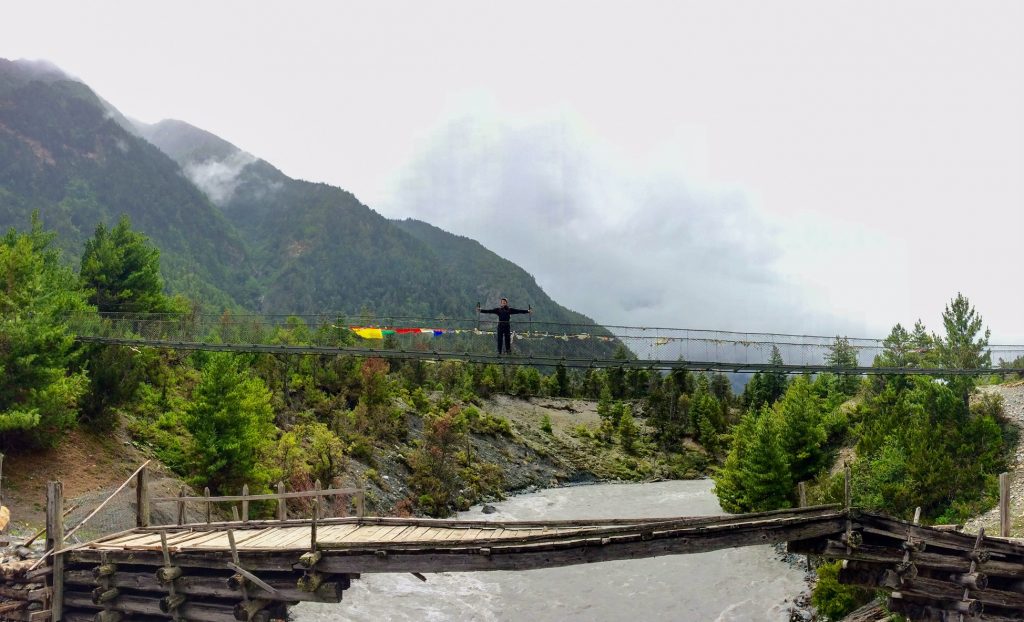

The trail then passes up through rainforests, before reaching true alpine heights: snow topped mountains, glaciers, glacial lakes, and enormous canyons.
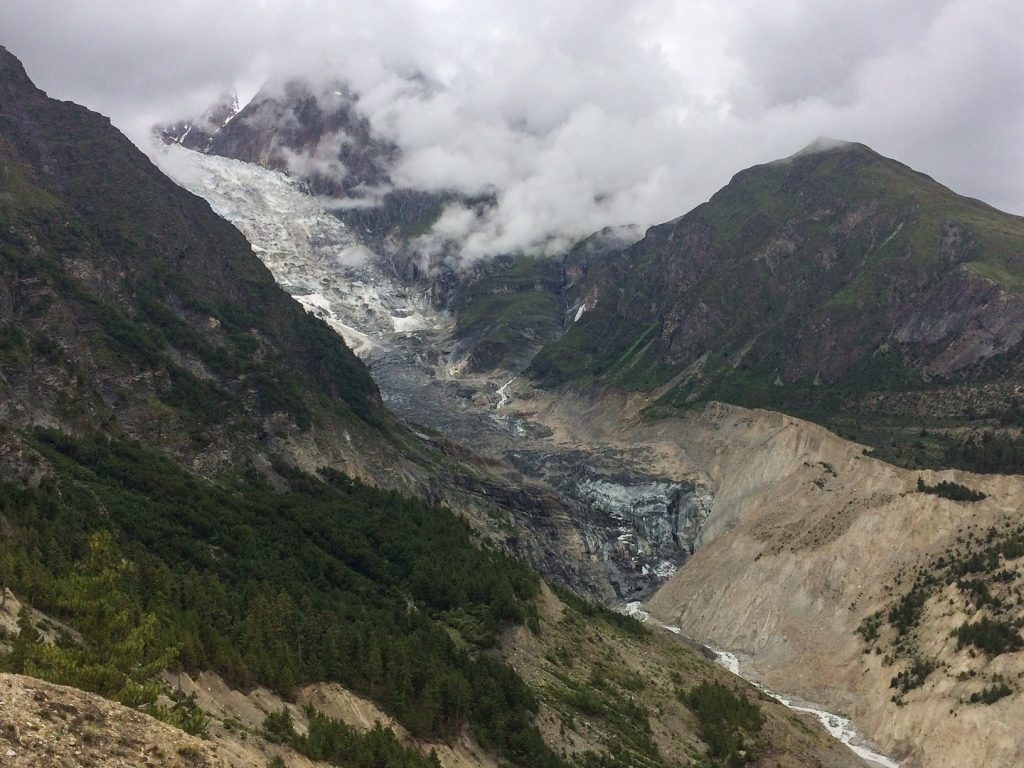

After topping the mountain pass at Thorong La, the trail drops into the rain shadow and descends into a dust bowl in the Muktinah Valley, a region that touches the border with the Tibetan Plateau.
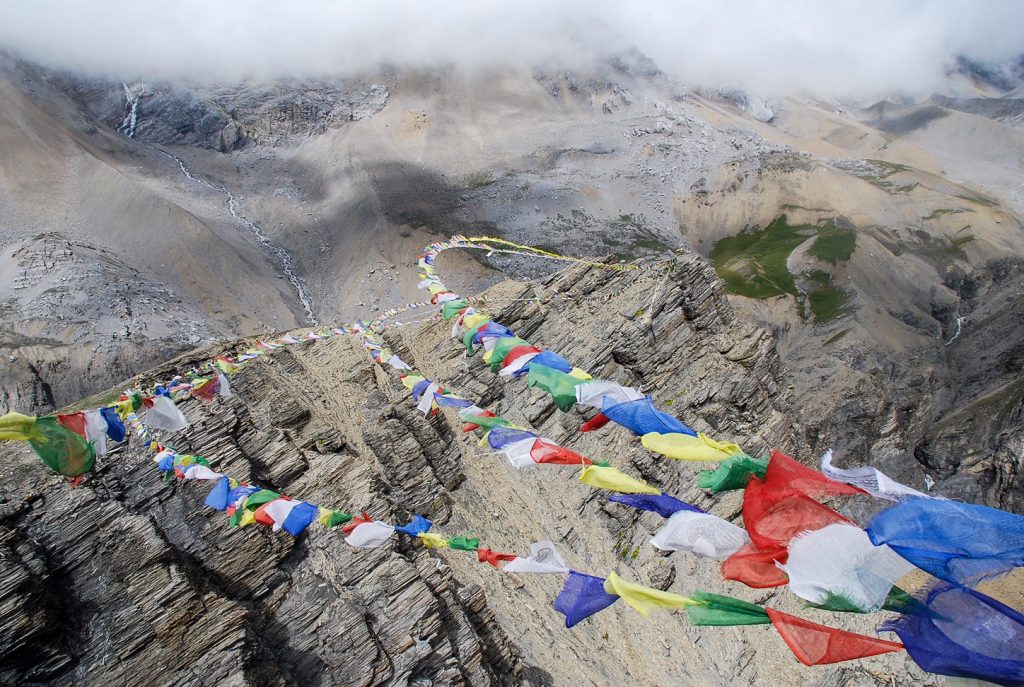

All the while, you will pass through quaint mountain villages, perched on steep cliffs. You will walk past Buddhist monuments, shrines, temples, and multi-coloured prayer flags fluttering in the wind – a symbol now iconic in the Himalayas.
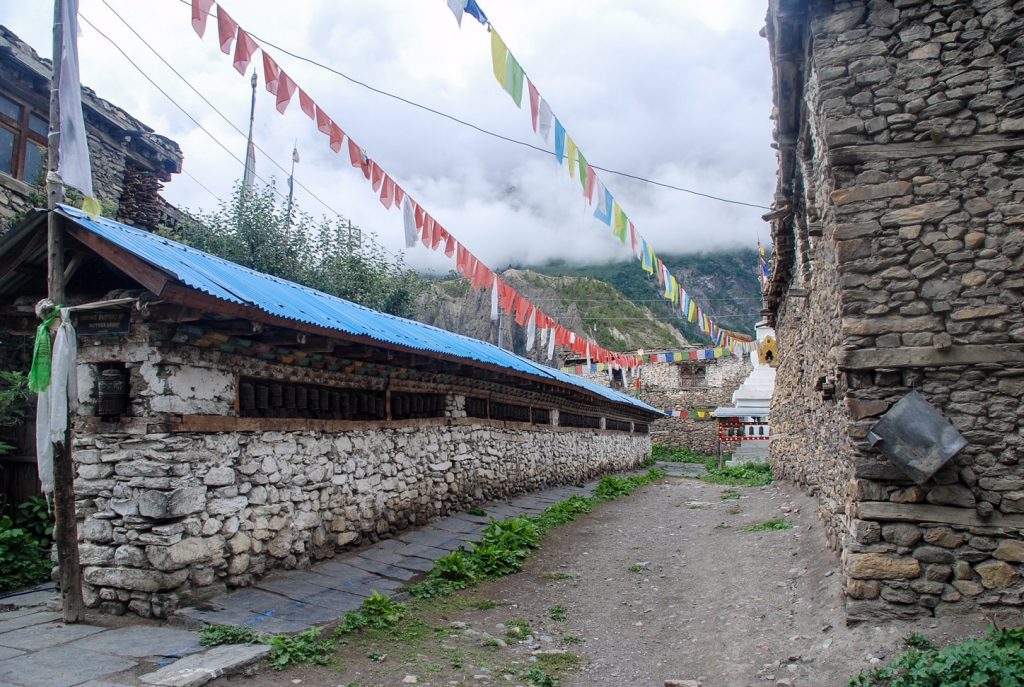

You will walk past great lumbering beasts, shaggy with winter fur, carrying bundles of supplies up the mountain paths. These yaks are hearded by Nepalese children and tanned mountain folk who grin and wave as you stroll past.
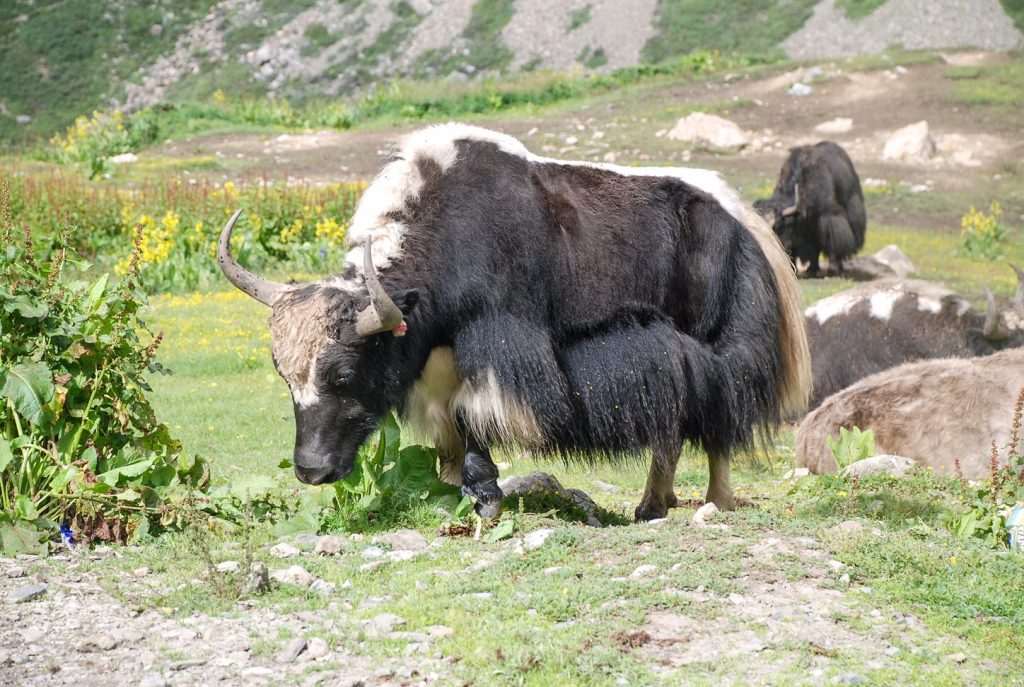

Some of the key features are the dusty Mustang Valley, the high-altitude Tilicho Lake (a side-trek to a glacier-fed lake at 4,149 metres of elevation), the mountain pass at Thorong La, the peaks of Annapurna Massif – namely Annapurna I (8,091 metres), and the sensational sunrise view from Poon Hill.
Pokhara
Pokhara is a wonderful city in itself with many things to do. Set against the shore of Lake Phewa with the Himalayas lining the horizon, Pokhara has many bars, cafes and restaurants for you to fill up on before/after your hike.
Hire a boat and row out onto the lake. Row past the Tal Barahi Temple then park your boat on the far shore to climb up to the World Peace Pagoda – an amazing experience.
There are numerous day trips around Pokhara to waterfalls (Devil’s Falls) and lots of caves filled with bats which you can explore (Mahendra Cave and Gupteshwor Mahadev Cave).
People often hire mopeds to visit these sites but be warned, if you don’t have an International Diver’s Licence you can get fined. Police watch out for tourists riding the bikes and it’s not uncommon to be pulled over.
Paragliding is another very popular sport in Pokhara and you will see many flying in the sky above you. Mountain biking is also growing in popularity to add to the extreme sports on offer in this area.
Make sure you visit the outdoor movie garden, my favourite place in all of Pokhara. It is on a hill overlooking the lake and each night you can watch a film on a big projector outside. It’s candlelit with comfy seats and they serve beer and pizza. Just amazing after 2 weeks of hiking.
See Hostelworld for accommodation options.
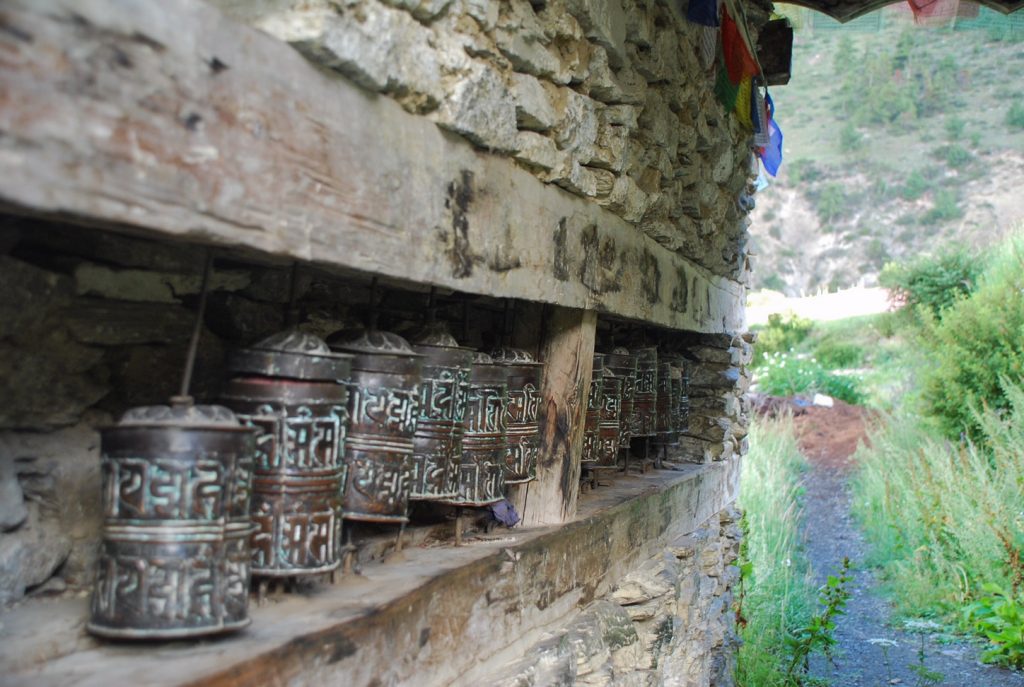

Kathmandu
Kathmandu is a city of ancient history and wondrous culture. Sadly, it is still reeling from the devastating earthquake that shook it in 2015. Despite damages to much of the city, there are still many places worth visiting.
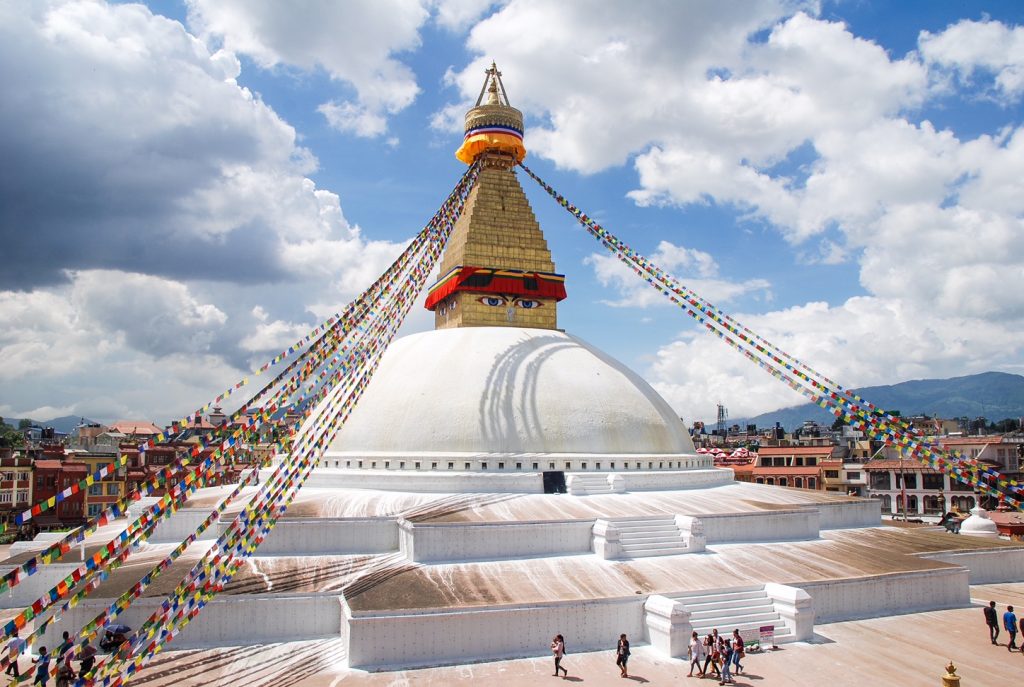

Arriving in Kathmandu is a shock to the senses. Narrow streets packed with beeping rickshaws and crowds of people. A snarl of telephone wires crisscrosses the walls of the buildings as smog and the smell of engine oil hang over the street. It’s a toned down version of India, but if you’re flying straight to Kathmandu be prepared for the bustle and chaos of a developing city.
First visit Durbar Square, a complex of old temples with astonishing Buddhist architecture. Admire the intricate designs of the buildings and get used to the flocks of pigeons that seem to permeate every area of this city.
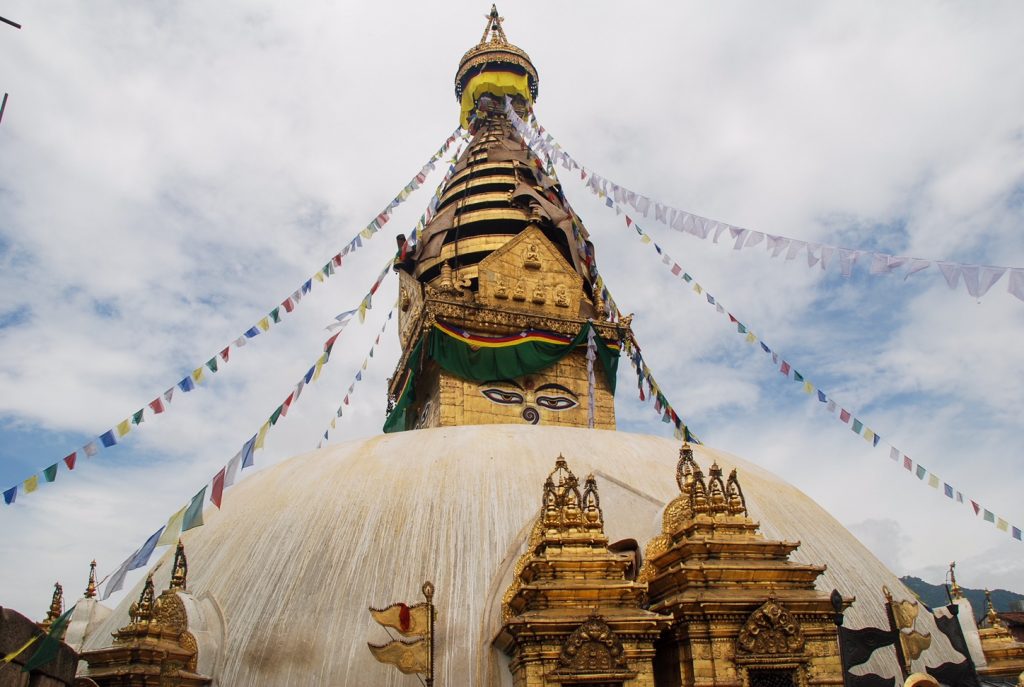

Next, visit Boudha Stupa – one of the most iconic sites in Nepal. An enormous statue dedicated to Buddha – a white sphere with a gold point, draped in multi-coloured prayer flags.
The Swayambhunath Stupa is a smaller version of the Boudha Stupa that’s perched high upon a hill surrounded by rainforest. There were monkeys everywhere in this temple – the infamous macaque. Naughty, mischievous, and feisty. But if you keep your distance, and keep your bag zipped tight, they’re a pleasure to watch.
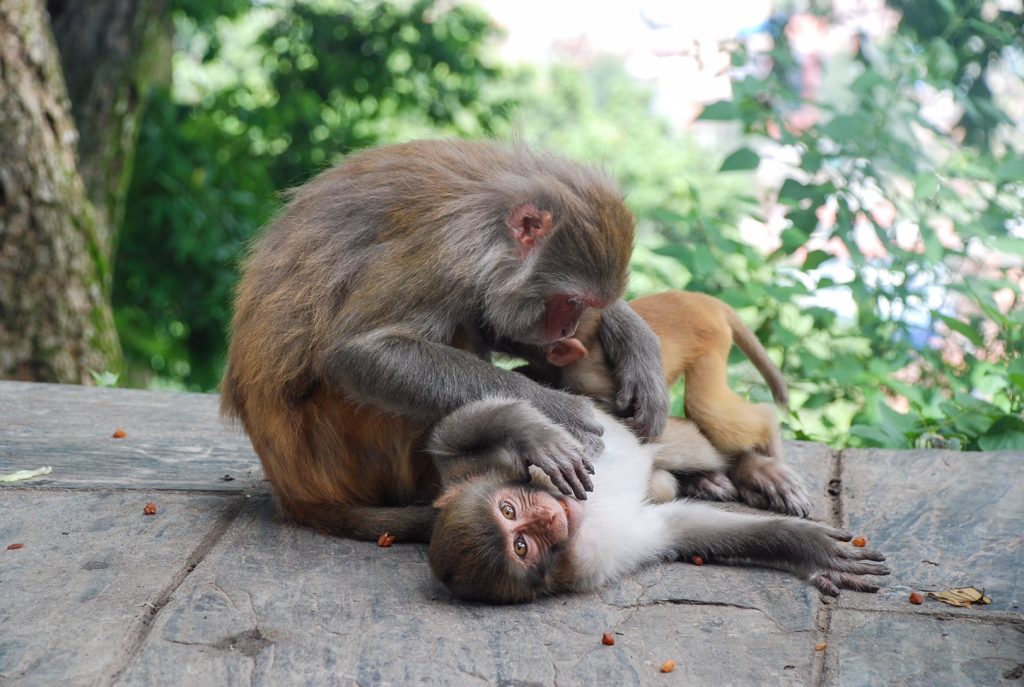

These are only a sample of the temples and religious sites you can see in the city. It’s possible to spend many days exploring the rich Nepalese culture in Kathmandu. See Hostelworld for accommodation options.
7. Food & Drink on the Annapurna Circuit?
Your options for food and drink on the Annapurna Circuit are going to be limited. There aren’t any supermarkets or big shops you can walk to with loads of choice. Generally, you are only able to get whatever dishes they offer on the lodge menus. You can get a small selection of snacks, such as Snickers and packets of cookies, from street stalls but the options are limited.
See also:
Best Hiking Food to Eat
Food
Generally, the dish you will be eating is Dahl Bhat. It is a lentil curry that is consumed by most Nepalese for almost every meal. The dahl is served on a silver platter with a scoop of rice, some chilli sauce, and sometimes a potato/vegetable side portion and a papad cracker (poppadom).
It’s common in Nepal, when having dahl, to abide by an eat ’till you’re full policy. As many times as you can finish your plate, your host will keep offering you more!
It is a nice dish but not booming with flavour; and eating the same meal every single day does really wear on you. Some of the tea houses offer more western dishes, but upon ordering them you will see they are really nothing like the food you get in the west.
I foolishly ordered a “carbonara” and received overcooked pasta with tomato sauce and strips of spam. Know the limits of the food and try to keep as close to the national cuisine as possible to get the best dishes.
Thukpa – a noodle soup – is a good option, as are the momos – fried vegetable dumplings. Any kind of vegetable fried noodles or rice are generally a safe bet as are the basic curries. I often ate cornbread, boiled eggs, or oatmeal for breakfast. There generally isn’t any meat on offer as it can’t be cooked fresh. Sometimes you do see yak meat on the menu as a special!
Of course, you have to try the sticky, sweet apple pie. Apples grow in the lower valleys and the pies have become something of a delicacy for hungry hikers to eat on the Annapurna Circuit. A few places offer Snickers fried in pastry! Trust me, after hiking all day, it is the most delicious calorific dish.
Drinks
Water is the safest bet to keep you hydrated. You need to make sure you are drinking plenty as you will be exercising intensely and being dehydrated can lead to AMS. Aim to drink 2 – 3 litres of water a day.
Try the seabuckthorn juice; it’s a bitter red/orange berry that grows in this area of the Himalayas and is very high in vitamins!
To drink you will mostly have chai tea. It’s a sugary, aromatic tea that is served with virtually every meal in India. It’s also said to be good to drink if you have any stomach issues such as diarrhoea. Chai is always a safe choice!
Bottles of beer are heavy to carry up the mountain and fragile so their cost reflects this. But a cold beer, even if it is a bit flat, looking out over the mountains is something I’d happily pay through the nose for!
Canned soft drinks can be bought but often they’re flat and not kept cold.
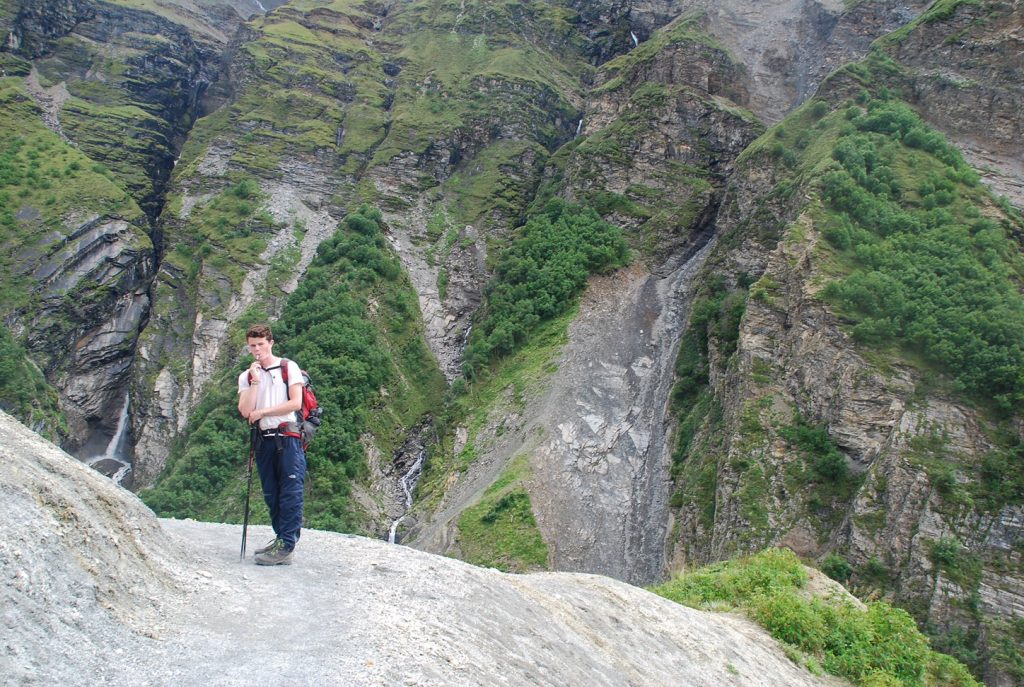

8. What to Pack?
One of the huge benefits of staying in lodges and guesthouses every night is that you can get the weight of your backpack down a huge amount. You won’t have to carry any camping equipment, minimal sleeping items, and only snacks and water for walking during the day.
Saving all this weight helps you enjoy your trek more. Make sure you invest in a good, comfortable hiking backpack and get to know it before you start the trail. A 40-50 litre backpack should be plenty big enough. It’s going to be on your back for over 2 weeks so you want to make sure it works well!
See also:
Day Hiking Gear Essentials
Multi-Day Hike Kit List
Shoes
The next most important bit of kit is your shoes. For this trail, you want waterproof hiking boots. You cross through streams, snow, and rocky mountain paths where tripping is always a hazard. You want them to be waterproof with good ankle support.
However, it’s important they are comfortable and as lightweight as possible. It’s no good starting the trail and by the first week, your feet are swollen and blistered, putting you in agony.
This means you must wear in your shoes before you get to the Annapurna Circuit. Turning up with new shoes is only going to set you up for failure. Practice walking with them back home, breaking them in and finding any places you get hotspots. Wear the hiking socks you plan on wearing on the hike and in general make sure you get to know them!
Clothing
You want to dress in layers and with lots of lightweight, synthetic gear. Avoid cotton as it doesn’t dry easily once it gets wet. Opt for mixed-thread clothing that can wick away moisture keeping you warm and dry.
It’s worth investing in hiking trousers. A good quality pair that will last the whole trek. Zip-offs if you’re walking in warmer weather, a thicker pair if you’re walking in winter. Bring a fleece with you, a down jacket, and a waterproof rain jacket.
Carry a warm hat, a neck warmer, and a pair of gloves as it gets very cold up in the mountains. The closer you walk to winter, the warmer your gear will need to be. Bring sunglasses and suncream at all times of the year. The glare of the snow and the thin alpine air will cause you to burn terribly unless you’re prepared.
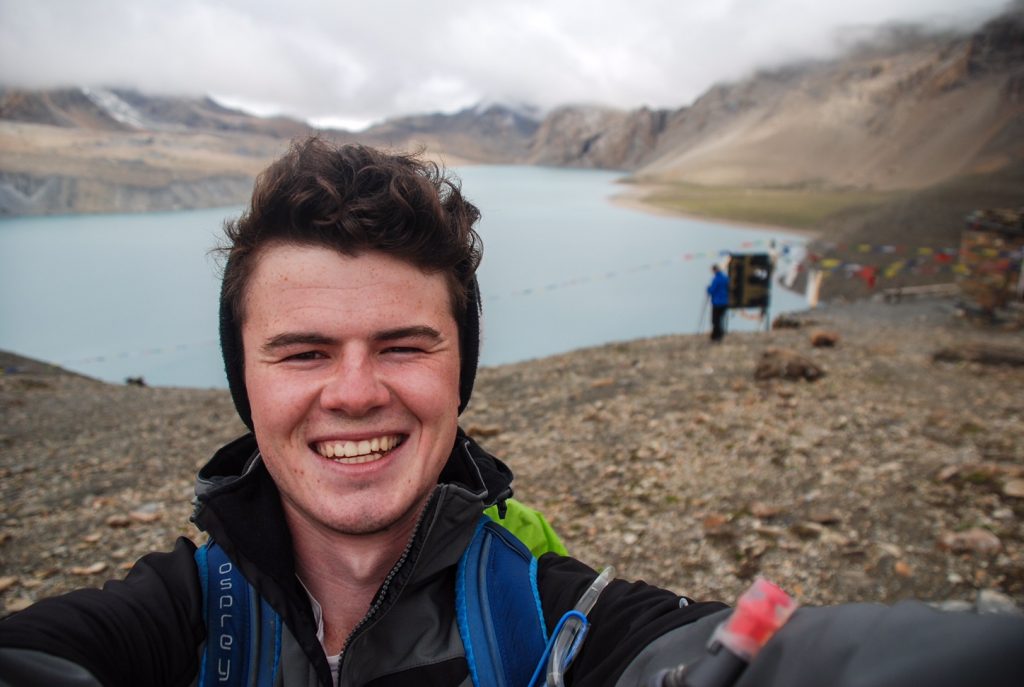

Bring a set of clothes to wear in the evening, such as a pair of warm socks you only wear in the tea house, thermal leggings, a thermal top, and a t-shirt. Hiking poles are also a good investment to help relive some of the pressure on your knees.
All these items can be brought in the Pokhara markets. There are endless stalls selling mountaineering gear and hiking equipment for cheap prices. Stock up on any extras before you start the Annapurna circuit but be aware that the quality isn’t always the best!
Extras
For personal items, carry a toothbrush, toothpaste, deodorant, and any other small sanitary items you require. A water filter is great if you want to ensure all the water you drink is clean. Take a Kindle/e-reader and a deck of cards with you for the evenings. There are no tv’s, limited wifi, and not a lot to do in your downtime other than read, sleep, and chat to your fellow hikers!
See also:
Top 10 Adventure Travel Books
This goes without saying, but you should pack a good camera. This is the trip of a lifetime and you don’t want to miss any of the action.
9. Is the Annapurna Circuit Safe?
This is not your everyday hike and it carries certain risks. One of the biggest dangers on the trail is AMS (Acute Mountain Sickness). People suffer altitude sickness at different heights and it affects everyone in different ways. One thing to be sure of are the symptoms and how to mitigate the dangers of getting mountain sickness.
AMS Symptoms
Firstly, be aware of the symptoms. You can start feeling the affects anytime around 3,000 metres but it’s more common to feel it at 4,000 m and above. AMS symptoms include:
- Headaches
- Dizziness
- Difficulty Breathing
- Fatigue
- Loss of Hunger
- Nausea
- Shortness of Breath
- Rapid Heart Rate
- Difficulty Sleeping
It’s likely you’ll experience some of these symptoms on the Annapurna Circuit trek, even if only in a small way. It’s important to pay attention to your body and never ignore symptoms if they start developing.
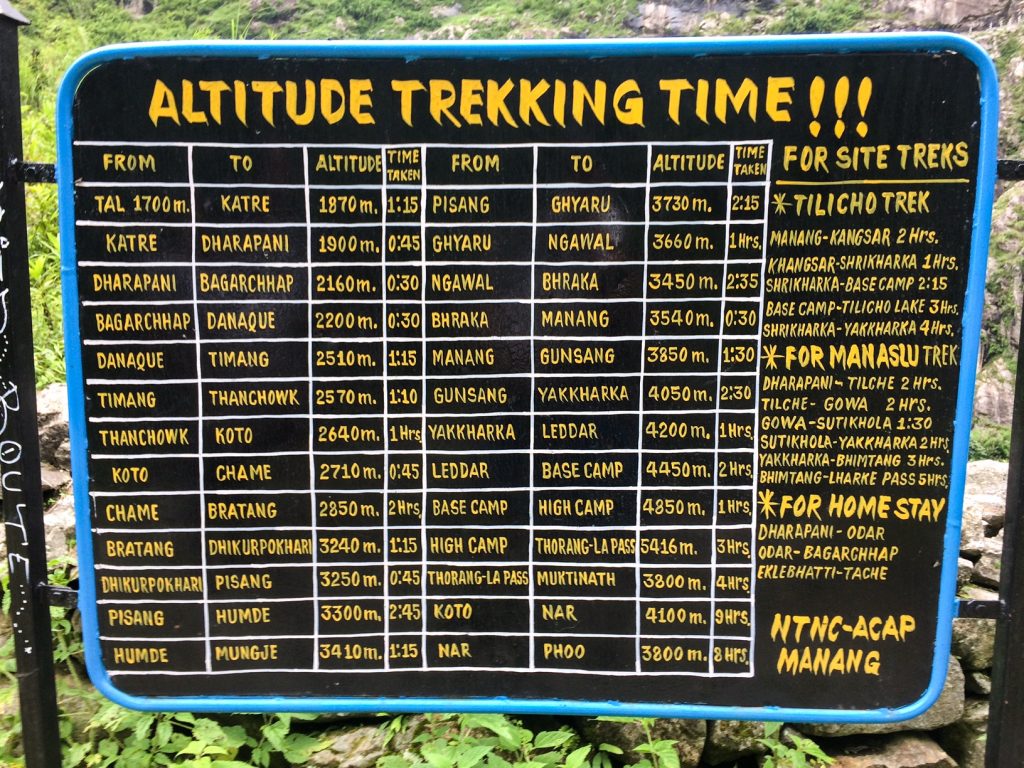

Avoiding AMS
The reason AMS occurs is because the air is thinner at altitude and contains less oxygen. The haemoglobin in your blood struggles to load up on oxygen as it would at lower altitudes, essentially suffocating your body. These symptoms generally worsen with activity and become exacerbated when doing physical tasks such as hiking!
One of the ways mountain sickness occurs is if you rush up to a high altitude without allowing yourself to acclimatise, that’s a surefire way to get ill. Here are some steps to avoid AMS on the Annapurna Circuit:
- Climb High, Sleep Low – this is particularly relevant near the highest points of the hike. Going on short walks up the mountain then returning to your lodge at a lower altitude to sleep can help your body adjust.
- Take it Slow – the slower you walk the trail the more time you give your body to adjust to the challenging conditions and adapt to the low oxygen levels.
- Take Some Rest Days – this will allow your body to recover and avoid over-exertion. Physical activity is more difficult at high altitude and it takes a big toll on the body. Resting allows for the appropriate recovery period whilst adjusting to the thin mountain air.
- Keep Rehydrated – Make sure you drink plenty of fluids throughout the trek. This can reduce some of the worst affects of AMS.
- Take Diamox – I didn’t use this and I didn’t meet anyone else on the trail who did. If you’re following the guidelines above you shouldn’t need Diamox – a preventive AMS medicine. It’s possible to get a prescription from your doctor if you’re worried and want it as an assurance.
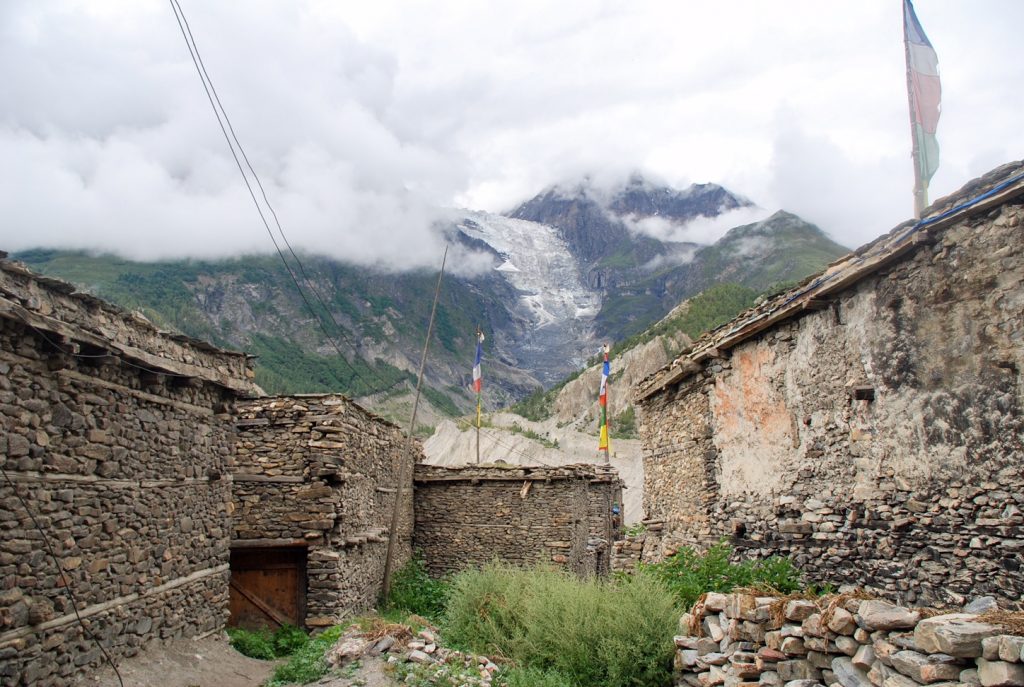

Other Dangers on the Annapurna Circuit
Another danger is tripping or falling and injuring yourself. Along a great deal of this trek, there is no safety net. No one can nip up the mountain to get you. You either have to be carried down then driven for many hours before you get to the nearest hospital, or you need to be air-lifted to rescue.
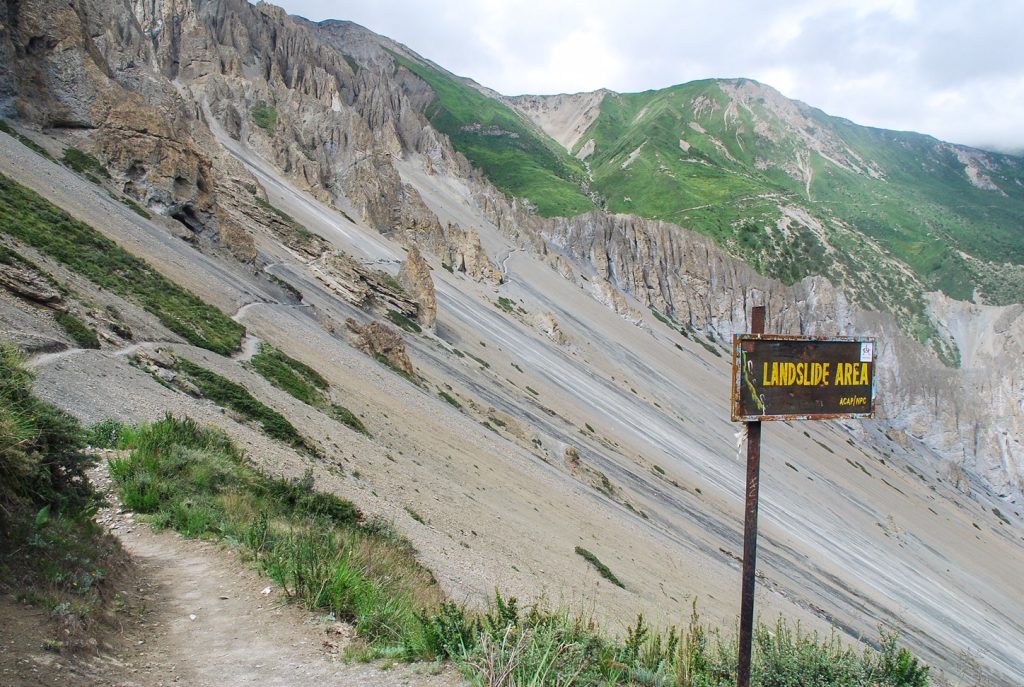

That means you have to have travel insurance. It is essential. You need to book the right kind of insurance that specifically covers high-altitude hiking and helicopter rescue.
One of the best insurance companies for this is World Nomads. They have specific cover for mountaineering and high mountain trekking. To see their policy options, follow the link to their website below.
10. Bonus Tips for the Annapurna Circuit
I had to learn some lessons the hard way on the Annapurna Circuit. Here are some bonus tips to improve your hike and to help you avoid the mistakes I made along the way.
Only Take Essentials
Think carefully about every item you bring and really consider whether it’s an essential. I bought 2 big books with me as well as a clunky travel guide. Useful, yes, but if I’d had a Kindle or e-reader, I could have drastically saved on all that extra weight.
Do you need a pair of jeans? Are make-up, shampoo, and conditioner really essentials? Do you need binoculars?
Back in the comfort of your own home, you may consider these items as essentials, but when you’re up in the mountain, you might think definitely. So save yourself the travel and leave any items that aren’t essential at home!
Bring a Water Filter
As I mentioned earlier, not all the water is clean. Drinking from mountain streams might seem okay, and most of the time it is. But consider, in some of the smaller villages there might not be adequate sewage processing facilities and the pipes can be old leading to the water taps.
Why risk getting sick when a water filter can solve all your problems?
I used sanitation tablets at the time and they were great for getting the water clean, but they took an hour or two to work. That can be frustrating to think that far in advance and having to wait for your water to clean. A water filter is lightweight and is sanitary immediately.
Take out Cash in Pokhara
This is a very important point. Make sure you take out plenty of cash in Kathmandu or Pokhara before you embark on the trek. Once you are up in the mountains you won’t be able to take out cash easily – not until Jomsom – and you need to make sure you have enough on you to last the duration of your trip.
As mentioned above, you want to budget for $20-30 USD per day. Add up the number of days you plan on hiking the Annapurna Circuit then give yourself a 2 or 3 day buffer and that should be enough to make sure you don’t run out of cash.
Watch Out for Scammers
Taking out money from an ATM is a whole issue in Nepal. Most ATMs don’t work and there are so few, even in the major cities. They are often in these dodgy little rooms in the middle of the street. There is only enough space for 1 or 2 people and a glass door on the front.
The screens are often not working and many times they won’t accept your card. It’s common to have to go to 2 or 3 ATMs before you can get any cash out. Unfortunately, because of this, both of my bank cards got scammed. Luckily this was right at the end of the trip and there wasn’t much cash to remove from my account.
It was still an unpleasant experience and you want to be careful. Don’t keep all your savings in one account, and try to be cautious when using the ATM. However, this is easier said than done and once you get to Nepal I’m sure you’ll see what I mean. It might be worth taking out currency in your home country before you leave to alleviate some of this pressure.
Do Some Training
This hike is by no means impossible, but it is very challenging. Going straight at the hike with low fitness and no training could be a recipe for disaster. Spend the months before the trek getting yourself prepared. It will allow you to enjoy the trail much more when you’re out there.
Go for 10 – 15 km walks near your home. Wear in your hiking shoes and your backpack. Get used to your equipment and walking for multiple hours in one day. Climb up and down lots of hills to get your joints and tendons used to the change in terrain.
At the gym work on your cardio. Use the stair-master. Strengthen your legs with squats and calf raises. All these things will help to improve your fitness and allow you to make the most out of the Annapurna Circuit!
Before You Go
Thanks for reading my travel guide on the Annapurna Circuit trek. If travel guides like this interest you, head over to my blog page to find out more!
If you’re new to Walk Wild, check out the About Me page to learn who I am and what made me want to be a travel writer.
Please comment below, let me know what you think and if there’s anything else you want information on!
Follow me on Twitter, Instagram, and YouTube to see out more.


